- How it works
Published by Robert Bruce at August 29th, 2023 , Revised On September 5, 2023

Biology Research Topics
Are you in need of captivating and achievable research topics within the field of biology? Your quest for the best biology topics ends right here as this article furnishes you with 100 distinctive and original concepts for biology research, laying the groundwork for your research endeavor.
Table of Contents
Our proficient researchers have thoughtfully curated these biology research themes, considering the substantial body of literature accessible and the prevailing gaps in research.
Should none of these topics elicit enthusiasm, our specialists are equally capable of proposing tailor-made research ideas in biology, finely tuned to cater to your requirements.
Thus, without further delay, we present our compilation of biology research topics crafted to accommodate students and researchers.
Research Topics in Marine Biology
- Impact of climate change on coral reef ecosystems.
- Biodiversity and adaptation of deep-sea organisms.
- Effects of pollution on marine life and ecosystems.
- Role of marine protected areas in conserving biodiversity.
- Microplastics in marine environments: sources, impacts, and mitigation.
Biological Anthropology Research Topics
- Evolutionary implications of early human migration patterns.
- Genetic and environmental factors influencing human height variation.
- Cultural evolution and its impact on human societies.
- Paleoanthropological insights into human dietary adaptations.
- Genetic diversity and population history of indigenous communities.
Biological Psychology Research Topics
- Neurobiological basis of addiction and its treatment.
- Impact of stress on brain structure and function.
- Genetic and environmental influences on mental health disorders.
- Neural mechanisms underlying emotions and emotional regulation.
- Role of the gut-brain axis in psychological well-being.
Cancer Biology Research Topics
- Targeted therapies in precision cancer medicine.
- Tumor microenvironment and its influence on cancer progression.
- Epigenetic modifications in cancer development and therapy.
- Immune checkpoint inhibitors and their role in cancer immunotherapy.
- Early detection and diagnosis strategies for various types of cancer.
Also read: Cancer research topics
Cell Biology Research Topics
- Mechanisms of autophagy and its implications in health and disease.
- Intracellular transport and organelle dynamics in cell function.
- Role of cell signaling pathways in cellular response to external stimuli.
- Cell cycle regulation and its relevance to cancer development.
- Cellular mechanisms of apoptosis and programmed cell death.
Developmental Biology Research Topics
- Genetic and molecular basis of limb development in vertebrates.
- Evolution of embryonic development and its impact on morphological diversity.
- Stem cell therapy and regenerative medicine approaches.
- Mechanisms of organogenesis and tissue regeneration in animals.
- Role of non-coding RNAs in developmental processes.
Also read: Education research topics
Human Biology Research Topics
- Genetic factors influencing susceptibility to infectious diseases.
- Human microbiome and its impact on health and disease.
- Genetic basis of rare and common human diseases.
- Genetic and environmental factors contributing to aging.
- Impact of lifestyle and diet on human health and longevity.
Molecular Biology Research Topics
- CRISPR-Cas gene editing technology and its applications.
- Non-coding RNAs as regulators of gene expression.
- Role of epigenetics in gene regulation and disease.
- Mechanisms of DNA repair and genome stability.
- Molecular basis of cellular metabolism and energy production.
Research Topics in Biology for Undergraduates
- 41. Investigating the effects of pollutants on local plant species.
- Microbial diversity and ecosystem functioning in a specific habitat.
- Understanding the genetics of antibiotic resistance in bacteria.
- Impact of urbanization on bird populations and biodiversity.
- Investigating the role of pheromones in insect communication.
Synthetic Biology Research Topics
- Design and construction of synthetic biological circuits.
- Synthetic biology applications in biofuel production.
- Ethical considerations in synthetic biology research and applications.
- Synthetic biology approaches to engineering novel enzymes.
- Creating synthetic organisms with modified functions and capabilities.
Animal Biology Research Topics
- Evolution of mating behaviors in animal species.
- Genetic basis of color variation in butterfly wings.
- Impact of habitat fragmentation on amphibian populations.
- Behavior and communication in social insect colonies.
- Adaptations of marine mammals to aquatic environments.
Also read: Nursing research topics
Best Biology Research Topics
- Unraveling the mysteries of circadian rhythms in organisms.
- Investigating the ecological significance of cryptic coloration.
- Evolution of venomous animals and their prey.
- The role of endosymbiosis in the evolution of eukaryotic cells.
- Exploring the potential of extremophiles in biotechnology.
Biological Psychology Research Paper Topics
- Neurobiological mechanisms underlying memory formation.
- Impact of sleep disorders on cognitive function and mental health.
- Biological basis of personality traits and behavior.
- Neural correlates of emotions and emotional disorders.
- Role of neuroplasticity in brain recovery after injury.
Biological Science Research Topics:
- Role of gut microbiota in immune system development.
- Molecular mechanisms of gene regulation during development.
- Impact of climate change on insect population dynamics.
- Genetic basis of neurodegenerative diseases like Alzheimer’s.
- Evolutionary relationships among vertebrate species based on DNA analysis.
Biology Education Research Topics
- Effectiveness of inquiry-based learning in biology classrooms.
- Assessing the impact of virtual labs on student understanding of biology concepts.
- Gender disparities in science education and strategies for closing the gap.
- Role of outdoor education in enhancing students’ ecological awareness.
- Integrating technology in biology education: challenges and opportunities.
Biology-Related Research Topics
- The intersection of ecology and economics in conservation planning.
- Molecular basis of antibiotic resistance in pathogenic bacteria.
- Implications of genetic modification of crops for food security.
- Evolutionary perspectives on cooperation and altruism in animal behavior.
- Environmental impacts of genetically modified organisms (GMOs).
Biology Research Proposal Topics
- Investigating the role of microRNAs in cancer progression.
- Exploring the effects of pollution on aquatic biodiversity.
- Developing a gene therapy approach for a genetic disorder.
- Assessing the potential of natural compounds as anti-inflammatory agents.
- Studying the molecular basis of cellular senescence and aging.
Biology Research Topic Ideas
- Role of pheromones in insect mate selection and behavior.
- Investigating the molecular basis of neurodevelopmental disorders.
- Impact of climate change on plant-pollinator interactions.
- Genetic diversity and conservation of endangered species.
- Evolutionary patterns in mimicry and camouflage in organisms.
Biology Research Topics for Undergraduates
- Effects of different fertilizers on plant growth and soil health.
- Investigating the biodiversity of a local freshwater ecosystem.
- Evolutionary origins of a specific animal adaptation.
- Genetic diversity and disease susceptibility in human populations.
- Role of specific genes in regulating the immune response.
Cell and Molecular Biology Research Topics
- Molecular mechanisms of DNA replication and repair.
- Role of microRNAs in post-transcriptional gene regulation.
- Investigating the cell cycle and its control mechanisms.
- Molecular basis of mitochondrial diseases and therapies.
- Cellular responses to oxidative stress and their implications in ageing.
These topics cover a broad range of subjects within biology, offering plenty of options for research projects. Remember that you can further refine these topics based on your specific interests and research goals.
Frequently Asked Questions
What are some good research topics in biology?
A good research topic in biology will address a specific problem in any of the several areas of biology, such as marine biology, molecular biology, cellular biology, animal biology, or cancer biology.
A topic that enables you to investigate a problem in any area of biology will help you make a meaningful contribution.
How to choose a research topic in biology?
Choosing a research topic in biology is simple.
Follow the steps:
- Generate potential topics.
- Consider your areas of knowledge and personal passions.
- Conduct a thorough review of existing literature.
- Evaluate the practicality and viability.
- Narrow down and refine your research query.
- Remain receptive to new ideas and suggestions.
Who Are We?
For several years, Research Prospect has been offering students around the globe complimentary research topic suggestions. We aim to assist students in choosing a research topic that is both suitable and feasible for their project, leading to the attainment of their desired grades. Explore how our services, including research proposal writing , dissertation outline creation, and comprehensive thesis writing , can contribute to your college’s success.
You May Also Like
To cite a TED Talk in APA style, include speaker’s name, publication year, talk title, “TED Conferences,” and URL for clarity and accuracy.
The central idea of this excerpt revolves around the exploration of key themes, offering insights that illuminate the concepts within the text.
What is a manuscript? A manuscript is a written or typed document, often the original draft of a book or article, before publication, undergoing editing and revisions.
Ready to place an order?
USEFUL LINKS
Learning resources, company details.
- How It Works
Automated page speed optimizations for fast site performance
Biology Research Projects for High School Students: 20 Ideas To Try This Summer

By János Perczel
Co-founder of Polygence, PhD from MIT
16 minute read
Biology and biomedical research are two of the most popular academic disciplines among high schoolers. If you’re someone who’s interested in those fields and you’re looking for research opportunities this summer, you’ve come to the right place! With the study of biology, not only can you gain a better understanding of the natural world, but your research can have practical applications in fields like medicine, agriculture, and environmental science. Whether you’re just starting out in your exploration of biology, have taken a biology class in school, or you’re looking to do some advanced research to submit to your state’s science fair , we have level-appropriate ideas for you!
With a variety of topics like cancer treatment, genetics, neurodegenerative diseases, and marine life, we’ve got you covered. Here is a curated list of 20 different research project ideas to get those creative juices flowing. If you’re hungry for more, head over to our comprehensive Project Ideas database here and browse over 2800 more ideas!
Research YOUR fave areas of Biology and Medicine
Polygence pairs you with an expert mentor in to create a passion project around biology and medicine. Together, you work to create a high quality research project that is uniquely your own. We also offer options to explore multiple topics, or to showcase your final product!
Human Body Project Ideas
Rate of cognitive decline in different elevations.
Oxygen partial pressure decreases with altitude, challenging blood oxygenation which may affect brain function. If you’ve ever felt some altitude sickness, then this is exactly what’s happening. This is because the atmospheric pressure decreases at higher elevations, leading to a decrease in the partial pressures of the gasses in the air, including oxygen. And of course, oxygen is needed for us to function. What is the effect on brain health/ cognition in sudden increased elevation: say, climbing Mount Everest? Does chronic exposure to high elevations increase the likelihood of dementia? In this project, a meta-analysis of published works examining the effects of altitude on cognition would be conducted.
Idea by mentor Alyssa
Building a Blood Vessel
Use online graphics to illustrate how a blood vessel forms. Blood vessels are structures that carry blood and are responsible for transporting nutrients and oxygen throughout the body. There are three main types of blood vessels: arteries, veins, and capillaries. For this project, complete a literature search to understand what is known about blood vessel growth. Then, utilize this information to generate a graphic with no words to demonstrate how the vasculature (network of blood vessels) forms. The goal of this project is to explain science without using text and therefore make it more available to a larger community.
Idea by mentor Natalie
Examining the bacterial profile of various households
As of late, bacterial microbiomes have been a huge and interesting topic in the field of bacteriology as they play an important role in human health. Bacterial microbiomes are communities of bacteria that live on or outside organisms. They’re found in various parts of the human body, and help us to digest food and regulate our immune system. In this project, you will seek to understand how skin microbiomes can differ between different individuals of different households. This project will require making different bacterial media that can be made at home selecting for various microorganisms. If you’re new to preparing bacterial media, check out this resource here!
Idea by mentor Hamilton
Regulation of Circadian Clocks
Sleep is known to be governed by two distinct processes: a circadian clock that aligns sleep and wakefulness to the solar day and the sleep homeostat that encodes for sleep debt as a compensatory mechanism against sleep loss. You’ve most likely heard about circadian rhythm and our body’s internal clock, and circadian regulation of sleep is a fundamental process that allows animals to anticipate sleepiness or wakefulness consistently every day. These mechanisms can be regulated in multiple ways: at the gene, protein, gene, and clock neuronal level. In this project, we will focus on 1) how to efficiently digest primary and review articles to compile and condense information, 2) investigate how circadian clocks are regulated at these different genetic levels, and 3) try to effectively summarize the information we've gathered. We can present this information in a variety of ways, and what the final product looks like is up to you.
Idea by mentor Oscar
The Biology of Aging
Aging is the number one risk factor for a variety of diseases including cancer, neurodegenerative disease, and loss of hearing/sight. We are only now beginning to truly understand the process of aging and have even started to uncover ways that we could stop, or potentially reverse, the effects of aging. What are the hallmarks/signs of aging? How do researchers study 'aging'? How does human lifespan and aging compare to the rest of the animal kingdom? Is it possible to stop or reverse the effects of aging? What advancements are being made related to this? We could explore these questions or brainstorm others you might have about the biology of aging.
Idea by mentor Emily
Animals, Plants, and Nature Project Ideas
How genetically engineered mosquitoes are reducing rates of vector-borne diseases such as zika.
Many countries are already releasing millions of genetically engineered mosquitoes into the wild every week. These mosquitoes have been modified to reduce their ability to transmit disease-causing pathogens like dengue fever, Zika, and malaria, and are sent into the wild to mate with disease-carrying mosquitoes. However, this is still controversial as some people are concerned about the unintended consequences on the environment. What could be the potential pros and cons for this? The project will mainly focus on doing meta analysis of articles and watching informative videos to understand how/why genetically engineered mosquitoes can be used to reduce rates of different diseases. Students will have the chance to use critical thinking and do in-depth research on genetic engineering techniques, how scientists determine breeding rates and number of insects released, and epidemiology of different bloodborne diseases.
Idea by mentor Vanessa
Efficacy of Marine Protected Areas
Marine protected areas (MPAs) are areas of ocean or coastal waters that are set aside for the conservation and sustainable use of marine resources. These areas are established by governments, NGOs, or other organizations, and they can take different forms, from fully protected "no-take" zones to areas with regulated fishing or other activities. Marine protected areas have the potential to guide sustainable resource management and protect biodiversity, but have a host of reasons for why they are not currently effective. Explore reasons for why MPAs may not be effective. Then develop a framework for mapping, modeling, and implementing an effective Marine Protected Area.
Bioinspiration: Do animals hold the answers?
Can the toxins produced by frogs help us fight antibiotic resistant bacteria strains? How can understanding how lizards and newts regrow their limbs help us improve wound treatment? Why do tilapia skins help with burns? Discover the role of animals in the development of modern medicine as well as its potential. Are there any ethical concerns with these developments and findings? If so, what are they and do they matter? Share your findings in a research proposal, article, or presentation.
Idea by mentor Cheyenne
How Climate Change Can Affect Future Distributions of Rare Species
Climate change, such as global warming and longer drought, can threaten the existence of some of the rarest plants on earth. It is important to understand how future suitable habitats will change for these rare species so that we can target our conservation efforts in specific areas. In this project, you will identify a rare species that you like (it can be animals, plants, or fungi!), and gather the data online on its current occurrences. Then you will learn how to perform species distribution modeling to map its current and future suitable habitat areas. To get you started on learning species distribution modeling, check out this Youtube resource here. The changes in the amount or location of future suitable habitats can significantly affect the destiny of a rare species. By doing this project, you will not only learn skills in data analyses but also become the best ambassador for this rare species that you love.
Idea by mentor Yingtong
A Reef’s Best Frenemies
Coral reefs are in global decline. A primary cause of this is "coral bleaching" which results in the white reefs we often see in the news. Coral bleaching is actually the breakdown in the partnership between the coral animal and tiny, symbiotic algae that live within its cells. Corals and algae have a variety of thermal tolerances which are likely decided by genetic and environmental factors. However, despite how important this relationship is, it's currently very poorly understood. This project would review existing literature on the symbiotic partnernship and try to identify factors that predict bleaching and thermal resilience.
Idea by mentor Carly
Dive in to BioMed NOW!
Register to get paired with one of our expert mentors and to get started on exploring your passions today! You have agency in setting up your schedule for this research. Dive in now!
Diseases and Treatments Project Ideas
The understanding of a new and upcoming treatment: immunotherapy.
Immunotherapies have been growing in the past few years as alternative treatments for many types of cancer. These treatments work by boosting the patient's immune system to fight the disease, however it is not always effective. There are many types of immunotherapies with various nuances, but they all work to attack specific cells that are causing the disease. For this project, pick one of a few types of immunotherapy and deeply understand the mechanism of action and what is the current effectiveness against the cancer it treats.
Idea by mentor Hannah
Exploring The Cancer Genome Atlas data
There has been an explosion of publicly available data for cancer. The Cancer Genome Atlas was a research program with the purpose of creating a comprehensive catalog of genomic and molecular information about different types of cancer, with the aim of improving our understanding of the disease and developing new treatments. The dataset has been used to identify new cancer subtypes, develop diagnostic tests, and discover potential targets for new cancer therapies. Explore the implications and impact of The Cancer Genome Atlas data, and why it’s become so important.
Idea by mentor Hersh
Systematic Review and Meta-Analysis of Physiological Benefits of Fasting-induced Autophagy
Autophagy, meaning "self-eating", is a cellular process where damaged or unwanted components are disposed. Autophagy has been linked to various diseased pathologies, including cancer and heart disease. Fasting or specific dietary lifestyles may induce levels of autophagy in the human body. In this project, we will perform and systematic review and meta-analysis of fasting or diet-induced autophagy and its benefits on the body. You will gain skills in 1) searching and reviewing primary literature, 2) computational skills for performing data analysis (R language), and 3) writing your scientific findings.
Idea by mentor Jose
The Amyloid Hypothesis: Sifting through the controversy
For many years, scientists have thought that amyloid beta was the protein responsible for a patient developing Alzheimer's Disease symptoms. This "Amyloid Hypothesis" is now being questioned in light of current clinical data. Recently, drugs have been developed that reduce amyloid beta in patients. Surprisingly, the drugs worked in reducing amyloid beta, but it did not result in the slowing of disease pathology. Does this mean that the amyloid hypothesis is incorrect? Is amyloid beta less important in the progression of disease then what we once thought? This research project aims to explore the issues with the amyloid hypothesis and to assess where we stand in our understanding of amyloid beta's contribution to Alzheimer’s.
Idea by mentor Patrick
How do vaccines work?
During the COVID pandemic, vaccines have been all over the news! But how do they actually work? What’s the science behind them? Through this project, you will explore how vaccines work and the history of science behind vaccine development. While the final product of the projectwill be up to you, the ultimate goal of this project is for you to be a true public health advocate for vaccines and to be able to communicate why vaccines are so important in a way that the general public can understand.
Idea by mentor Helen
Sleep Disruption Profiles in Various Mouse Models of Alzheimer’s
Alzheimer's disease (AD) has been studied for decades but we are no closer to understanding the mechanisms of the disease. Because of the vast number of researchers studying AD, there are numerous models used to study the disease. All these models have different sleep profiles, phenotypes, disease onsets, sex differences etc. Therefore, in this project we will compile a document based on extensive literature review about the various models there are. We will focus on sleep profiles in these animals with an emphasis on male and female differences. This information is valuable because it is important to know which model is best to use to answer your scientific questions and there is a lot of criticism (by other scientists) that can be brought on by the model chosen so you need to be able to justify your choice. This project will also introduce you to the world of AD research and some of the gaps in knowledge in the field.
Idea by mentor Shenee
Rethinking The Treatment Of Neurodegenerative Diseases
Neurodegenerative diseases affect millions of people worldwide. They are conditions that affect the nervous system, particularly the brain and spinal cord, and examples include Alzheimer’s and Parkinson’s. While billions of dollars have been spent trying to find treatments for the disease, very few drugs and therapies have had a meaningful impact on slowing down disease progression. This is often because by the time someone is diagnosed with a disease, it has progressed too far for a treatment to have a substantial effect. Some recent approaches to treatment have turned to looking for early indications of the disease (termed "biomarkers") that can occur before the onset of symptoms. By diagnosing disease and beginning treatment before symptoms arise, these treatments could have a more profound effect in slowing down the progression of disease. Students could review the recent progress being made on identifying biomarkers for neurodegenerative diseases, and either write a paper or even record a podcast on their findings!
Idea by mentor David
Genetics Project Ideas
Height and genetics: nature or nurture.
How much do your genes determine your height? How much do nutrition and environmental factors play a role? What gene variants are implicated in height differences and what is the role of epigenetics? Epigenetics is the study of heritable changes in gene expression or cellular phenotype that occur without changes to the underlying DNA sequence. These changes can be influenced by diet and lifestyle. We will access and analyze an open dataset on twins to estimate the correlation between monozygotic twins (who have the exact same DNA) and height. You will learn to use R to open a dataset, analyze data with statistical methods such the student’s t-test, and display your data as graphs and charts. Finally, you will learn how to make a research presentation on height and genetics, describe the research methods, and present the data in a compelling and thorough way.
Idea by mentor Adeoluwa
The World of Personalized Medicine
Similar to our fingerprints, our genetic code is also unique to each individual person. Our genetic code is what determines our hair color, height, eye color, skin tone...just about everything! For those that develop diseases such as cancer, their genetic code found inside the malignant cells that comprise a tumor may also be unique to them or to certain groups of people with similar mutations (the drivers of disease). So why is it that we treat each person the same way even though the genetic drivers of that disease may be disparate? The world of Personalized Medicine is new and exciting and looks to circumvent this problem. Personalized Medicine (also known as precision medicine) uses the genetic code of a patients disease to guide treatment options that prove to be highly efficacious. Together, lets write a review on a disease of your choice that could benefit from Personalized Medicine based on current literature and research.
Idea by mentor Somer
General Biology Project Ideas
Teach a biology concept two ways: to your fellow students and to the general public.
One of the best ways to learn is to teach. Choose a biological concept that interests you and prepare a lesson and or demo on it. The format should be a video recording of yourself teaching (a la Khan Academy or a Zoom class), but the other details are up to you. Consider incorporating a demonstration (e.g. how can you use items from your kitchen to illustrate properties of mixtures?) or animation (e.g. to illustrate molecular motion). Also consider how you will check that your students understand the concept(s) and/or skill(s) you have taught them. Prepare and record two versions of your lesson: one intended for your peers and one for the general public. How will the versions differ to reflect these different audiences? You will learn what it's like to teach, gain a much greater understanding of your chosen concept(s)/skill(s), and learn how to communicate science to different audiences.
Idea by mentor Alexa
Once you’ve picked a project idea, check out some of our resources to help you progress with your project! Whether you’re stuck on how to cite sources , how to come up with a great thesis statement , or how to showcase your work once it’s finished , we’ve created blog posts to help you out. If you’re interested in doing one of the biology research projects with the help of an amazing mentor at Polygence, apply now ! If you would like some help with coming up with your own idea, book a complimentary consultation call with our admissions team here !
Feeling Inspired?
Interested in doing an exciting research project? Click below to get matched with one of our expert mentors!
Custom Essay, Term Paper & Research paper writing services
- testimonials
Toll Free: +1 (888) 354-4744
Email: [email protected]
Writing custom essays & research papers since 2008
Top 100 biology research topics for high school and college.
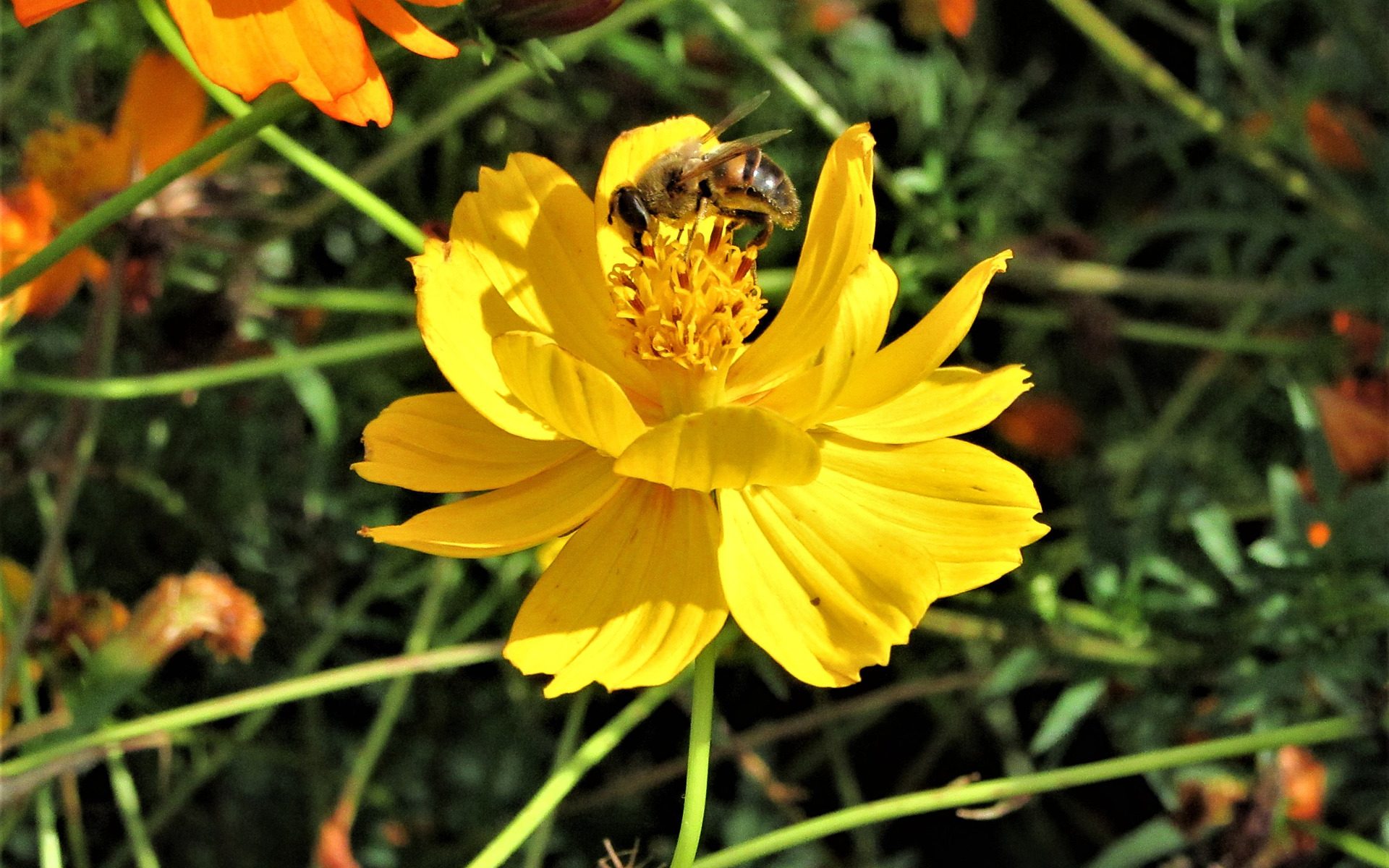
Writing a biology essay may not sound like a very difficult thing to do. In fact, most students really like this subject. The problem is not that you can’t write a good paper on a topic in biology. The problem is with finding excellent biology research topics. Now, you may be wondering why you would want to invest so much time into finding great biology research paper topics. After all, what you write in the essay matters more than the topic, right? Wrong! We are here to tell you that professors really appreciate interesting and unique topics.
And it makes a lot of sense, if you think about it. If you simply pick one of the most popular biology research topics, you will never be able to pique the interest of your teacher. He has read dozens, if not hundreds, or papers on that exact same topic. What you want to do is come up with interesting biology research topics. You want to find topics that none of your classmates are thinking of writing an academic paper about. You will shortly see why this is important. And we will also give you 100 biology topics for research projects that you can use for free – right now!
Biology Research Paper Topics Really Are Important!
It doesn’t matter what area of biology you need to write about. This information applies to everything from zoology and botany to anatomy. The reality is that your professor will really appreciate good topics. And you can rest assured that he or she knows how to spot them. The moment the professor starts to read your paper, he or she will immediately realize that you really did your best to find an excellent topic. And if you write a good introduction paragraph (which contains a captivating thesis statement as well), you are in the best position to earn bonus points.
You may not be aware of it, but teachers are willing to treat great papers with more leniency. This means that you will not get penalized for minor mistakes if you come up with a great topic. In other words, you will get a better grade on your papers if you manage to come up with good research topics for biology. This is a fact and it is based on thousands of pieces of feedback from our readers.
How Do You Choose Good Biology Research Topics?
Choosing research topics for biology can be a daunting task. Frankly, the research paper topics biology students are looking for are not easy to come by. The first thing you want to avoid is going to the first website that pops up in Google and getting your ideas from there. Most of your peers will do the same. Also, avoid topics that are extremely simple. You will simply not have enough ideas to write about. Of course, you should avoid overly complex topics because finding information about them may be extremely difficult.
The best way to find a good topic, in our opinion, is to get in touch with an academic writing company. You will get access to a professional writer who knows exactly what professors are looking for. A writer will quickly give you an amazing research topic in biology.
Eloquent Examples of Popular Biology Research Topics
To make things as simple as possible for you, we’ve put together a list of biology research project ideas. You will find 100 topics on various subjects below. Of course, you can use any of our topics for free. However, keep in mind that even though we are doing our best to maintain this list fresh, other students will find it as well. If you need new topics for your next biology essay, we recommend you to get in touch with us. We monitor our email address, so we can help you right away. Also, you can buy a research paper from our service.
Biology Research Topics for High School
Are you looking for biology research topics for high school? These are relatively simple when compared to college-level topics. Here are a couple of topic ideas that high school students will surely appreciate:
- Identifying Three Dead Branches of Evolution.
- What Is Sleep?
- How Does Physical Exercise Affect the Metabolism?
- A Behavioral Study of Birds.
- How Does Music Affect Your Brain?
- Climate Change and Biodiversity.
- Are Bees Really Becoming Extinct?
- Rainforest Extinction Is Dangerous.
- The Benefits of Organic Farming.
- Can the Brain Repair Itself?
- The Effect of Bacteria on Depression.
- How Do Sea Animals Camouflage?
Research Topics in Biology for Undergraduates
Research topics in biology for undergraduates are more complex than high school or college topics. Our researchers did their best to find topics that are relatively complex. However, each one of the following topics has plenty of information about it online:
- What Is the Mechanism of Metastasis in Cancer Patients?
- How Do Tumor Suppressor Genes Appear?
- How Can We Destroy Cancer Cells Without Damaging Other Cells?
- The Benefits of Gene Therapy.
- Analyzing the Huntington’s Disease (the HTT Gene).
- How Does the down Syndrome (Trisomy of 21st Chromosome) Appear?
- Analyzing the Brain Activity During an Epileptic Seizure.
- How Are Our Memories Formed and Preserved?
- The Effect of Probiotics on Infections.
- Analyzing Primate Language.
- Analyzing Primate Cognitive Functions.
- The Link Between Darwin’s Theory and Biology.
Biology Research Topics for College Students
Biology research topics for college students are of moderate difficulty. They are easier than undergrad topics and more complex than high school topics. While compiling this list, we made sure you have more than enough information online to write the paper quickly:
- Using DNA Technology in the Field of Medical Genetics.
- The Effect of Drinking on Embryonic Development.
- How Are Genes Mapped and Cloned?
- Explain What Genetic Polymorphism Is.
- What Is a Hereditary Disease?
- The Effect of Drugs on Embryonic Development.
- Describing Oligogenic Diseases (like Hirschsprung Disease)
- What Is the Mendelian Inheritance?
- How Transcriptomics and Proteomics Changed Modern Medicine.
- The Risk Factors of Infertility Explained.
- How Does Aging Effect Infertility?
- What Do Ash Elements Do in a Plant?
- Explaining the Pigments in a Plant Cell.
- How Is Photosynthesis Done?
- The Role of Fats in Plant Cells.
- The Effect of Smoking on Embryonic Development.
Cell Biology Research Topics
Some of the best biology topics are cell biology research topics. The scientific community is constantly making progress in this area, so there is always something new to write about. Here are some of the best examples:
- What Is Regenerative Medicine?
- A Closer Look at Tissue Engineering.
- Discuss the Future of Regenerative Medicine.
- Analyzing Therapeutic Cloning.
- The Pros and Cons of Creating Artificial Organs.
- How Do Cell Age?
- Can We Reverse Cell Aging?
- Advances in Cell Therapy.
- What Is Cell Adhesion?
- Explaining Cell Division.
- What Is Cellular Metabolism?
- Describe Active and Passive Transport in Cells.
- What Are Cell Plastids?
Evolutionary Biology Research Paper Topics
If you want something more complex, you can try your hand at writing on evolutionary biology research paper topics. As with all our topics, you will be able to find a lot of ideas and information online. Here are our picks:
- Where Did Plants Come From? (The Evolutionary Theory)
- Explaining the Host-parasite Coevolution.
- How Did Parasites Evolve over Time?
- What Is Natural Selection and How Does It Work?
- Explain Sexual Selection.
- Explain Sexual Conflict.
- How Did Our Immune Systems Evolve?
- How Do New Species Appear in the Wild?
- The Evolution of Cell Respiration.
- What Is the Hippo Pathway? (Developmental Biology)
Various Topics
Antibiotics resistance, agriculture and cloning are hot subjects nowadays. Your professor will surely be interested to learn more about biology research topics. Here is a mix of topic ideas from our established community of academic writers:
- The Problem of Using Antibiotics on Large Scale.
- Examining the Effects of Salt on Plants.
- What Is DNA Technology?
- The Effects of GMOs on the Human Body.
- How Is the Quality of Antibiotics Controlled?
- How Are GMO Food Crops Created?
- The Effect of Veterinary Antibiotics on Humans.
- The Allergic Reactions to Specific Antibiotics.
- A Look at How Penicillin Works in the Human Body.
- How Are Antibiotics Obtained?
- What Are Natural Biochemicals with Pest-repellent Properties?
- The 3 Most Toxic Effects of Antibiotics
- How the Human Body Develops Resistance to Antibiotics.
- The Impact of Biology on the Us Agriculture.
- What Is the Green Revolution?
- Analyzing the Minerals in the Plant Cell.
- Analyzing Muscle Development and Regeneration
- The Uses of Cancer Stem Cells.
Marine Biology Research Topics
There is a lot of talk about global warming, about microplastics in our oceans, and about endangered marine species. This means that marine biology research topics are a very hot topic today. Here are some of our best ideas:
- Can GMO Organisms Break down Oil after Maritime Accidents?
- Pollution-absorbing Bio-films.
- Microbes That Can Absorb Toxic Compounds in the Water.
- Can We Really Use Bioluminescence?
- How Is Bio-diesel Created?
- Analyzing the Coral Reef Biology.
- Why Is the Lobster Population Dwindling?
- The Effect of Mass Fishing on the World’s Oceans.
- Global Warming and Its Effect on Marine Microorganisms.
Molecular Biology Research Topics
Writing about molecular biology research topics is not easy. However, it’s a foolproof way to get a top grade. Your professor will really appreciate your willingness to write an essay about a complex topic. Just make sure you know what you are talking about. Below you can find some of the best topics:
- How Is Insulin Produced?
- How Is the Growth Hormone Produced?
- Analyzing the Repropagation of Translation.
- What Is DNA-telomerase?
- The Process of Sequencing Nucleotides in DNA.
- What Is Telomerase?
- The Link Between Telomerase and Cancer.
- The Link Between Telomerase and Aging.
- How Does DNA Forensics Work?
- Describe the Process of Protein Metabolism.
There is no such thing as easy biology research topics. When the topic is too simple, you end up getting penalized. You can’t write 500 words about it without straying away from the subject. Also, no matter how interesting the topic may be, you should make sure that the essay is written perfectly. This means that not even interesting biology research topics can save you from a bad grade if you fail to follow all applicable academic writing standards.
Find it hard to cope with your college paper? Great news! Use promo “ mypaper20 ” and enjoy 20% discount on a biology writing assignment from our profs!

23 Ideas for Science Experiments Using Plants
ThoughtCo / Hilary Allison
- Cell Biology
- Weather & Climate
- B.A., Biology, Emory University
- A.S., Nursing, Chattahoochee Technical College
Plants are tremendously crucial to life on earth. They are the foundation of food chains in almost every ecosystem. Plants also play a significant role in the environment by influencing climate and producing life-giving oxygen. Plant project studies allow us to learn about plant biology and potential usage for plants in other fields such as medicine, agriculture, and biotechnology. The following plant project ideas provide suggestions for topics that can be explored through experimentation.
Plant Project Ideas
- Do magnetic fields affect plant growth?
- Do different colors of light affect the direction of plant growth?
- Do sounds (music, noise, etc.) affect plant growth?
- Do different colors of light affect the rate of photosynthesis ?
- What are the effects of acid rain on plant growth?
- Do household detergents affect plant growth?
- Can plants conduct electricity?
- Does cigarette smoke affect plant growth?
- Does soil temperature affect root growth?
- Does caffeine affect plant growth?
- Does water salinity affect plant growth?
- Does artificial gravity affect seed germination?
- Does freezing affect seed germination?
- Does burned soil affect seed germination?
- Does seed size affect plant height?
- Does fruit size affect the number of seeds in the fruit?
- Do vitamins or fertilizers promote plant growth?
- Do fertilizers extend plant life during a drought?
- Does leaf size affect plant transpiration rates?
- Can plant spices inhibit bacterial growth ?
- Do different types of artificial light affect plant growth?
- Does soil pH affect plant growth?
- Do carnivorous plants prefer certain insects?
- 8th Grade Science Fair Project Ideas
- Plant and Soil Chemistry Science Projects
- High School Science Fair Projects
- Middle School Science Fair Project Ideas
- Animal Studies and School Project Ideas
- Environmental Science Fair Projects
- Elementary School Science Fair Projects
- College Science Fair Projects
- Chemistry Science Fair Project Ideas
- Magnetism Science Fair Projects
- 11th Grade Science Fair Projects
- 9th Grade Science Fair Projects
- Science Fair Project Ideas
- 4th Grade Science Fair Projects
- Caffeine Science Fair Projects
- Science Fair Experiment Ideas: Food and Cooking Chemistry
- Skip to primary navigation
- Skip to main content
- Skip to primary sidebar
- Skip to footer
Understanding Science
How science REALLY works...
- Understanding Science 101
Science works with ideas that can be tested using evidence from the natural world.
Science works with testable ideas
If an explanation is equally compatible with all possible observations, then it is not testable and hence, not within the reach of science. This is frequently the case with ideas about supernatural entities. For example, consider the idea that an all-powerful supernatural being controls our actions. Is there anything we could do to test that idea? No. Because this supernatural being is all-powerful, anything we observe could be chalked up to the whim of that being. Or not. The point is that we can’t use the tools of science to gather any information about whether or not this being exists — so such an idea is outside the realm of science.
A SCIENCE PROTOTYPE: RUTHERFORD AND THE ATOM
Rutherford’s story continues as we examine each item on the Science Checklist. To find out how this investigation measures up against the rest of the checklist, read on.
- Science in action
- Take a sidetrip
- Teaching resources
Even ideas about things that occurred long ago, that happen in distant galaxies, or that are too small for us to observe directly can be testable. For some examples of testing ideas about the very old, very distant, and very tiny, explore these stories:
- Asteroids and dinosaurs
- The structure of DNA: Cooperation and competition
Find out how scientific ideas are actually tested. Visit Testing scientific ideas in our How science works section.
- Learn strategies for building lessons and activities around the Science Checklist: Grades 6-8 Grades 9-12 Grades 13-16
- Get graphics and pdfs of the Science Checklist to use in your classroom.
Science aims to explain and understand
Science relies on evidence
Subscribe to our newsletter
- The science flowchart
- Science stories
- Grade-level teaching guides
- Teaching resource database
- Journaling tool
- Misconceptions

BIO 1115: Cell Biology
- Research Proposal
- Topic Development
- Proposal Outline
- Literature Review
Testable Hypothesis
- Final Proposal
What is a Hypothesis?
From central question to testable hypothesis.
Topic Development: Two sample questions emerge from the two methods used:
Central Question(s)
In order to transform these questions into working thesis statements, start by simply shifting or reframing the verb from a point of question to a point of declaration!
By shifting or reframing the verb , these questions have now become testable Hypotheses from which an experiment is designed, variables are tested, methods are established, data is gathered, evidence is given, and conclusions are demonstrated.
- << Previous: Literature Review
- Next: Final Proposal >>
- Last Updated: Aug 21, 2023 12:40 PM
- URL: https://libguides.cedarville.edu/bio1115
Science Bob
- Experiments
- Science Fair Ideas
- Science Q&A
- Research Help
- Experiment Blog
Okay, this is the hardest part of the whole project…picking your topic. But here are some ideas to get you started. Even if you don’t like any, they may inspire you to come up with one of your own. Remember, check all project ideas with your teacher and parents, and don’t do any project that would hurt or scare people or animals. Good luck!
- Does music affect on animal behavior?
- Does the color of food or drinks affect whether or not we like them?
- Where are the most germs in your school? ( CLICK for more info. )
- Does music have an affect on plant growth?
- Which kind of food do dogs (or any animal) prefer best?
- Which paper towel brand is the strongest?
- What is the best way to keep an ice cube from melting?
- What level of salt works best to hatch brine shrimp?
- Can the food we eat affect our heart rate?
- How effective are child-proof containers and locks.
- Can background noise levels affect how well we concentrate?
- Does acid rain affect the growth of aquatic plants?
- What is the best way to keep cut flowers fresh the longest?
- Does the color of light used on plants affect how well they grow?
- What plant fertilizer works best?
- Does the color of a room affect human behavior?
- Do athletic students have better lung capacity?
- What brand of battery lasts the longest?
- Does the type of potting soil used in planting affect how fast the plant grows?
- What type of food allow mold to grow the fastest?
- Does having worms in soil help plants grow faster?
- Can plants grow in pots if they are sideways or upside down?
- Does the color of hair affect how much static electricity it can carry? (test with balloons)
- How much weight can the surface tension of water hold?
- Can some people really read someone else’s thoughts?
- Which soda decays fallen out teeth the most?
- What light brightness makes plants grow the best?
- Does the color of birdseed affect how much birds will eat it?
- Do natural or chemical fertilizers work best?
- Can mice learn? (you can pick any animal)
- Can people tell artificial smells from real ones?
- What brands of bubble gum produce the biggest bubbles?
- Does age affect human reaction times?
- What is the effect of salt on the boiling temperature of water?
- Does shoe design really affect an athlete’s jumping height?
- What type of grass seed grows the fastest?
- Can animals see in the dark better than humans?
Didn’t see one you like? Don’t worry…look over them again and see if they give you an idea for your own project that will work for you. Remember, find something that interests you, and have fun with it.
To download and print this list of ideas CLICK HERE .

- The scientific method
- science fair resources
- a little helpful advice
ADS (these ads support our free website)
Share this page.
Upcoming Summer 2024 Application Deadline is May 12, 2024.
Click here to apply.

Featured Posts

10 Free Summer Programs for Middle School Students

10 Computer Science Courses for High School Students

10 Prestigious Business Competitions for High School Students

8 Machine Learning (ML) Internships for High School Students

9 Productive Things to do Over the Summer as a High School Student

8 Pharmacy Internships for High School Students

10 Coding Internships for High School Students

Sally Ride Science Academy - 8 Reasons Why It's Worth It

10 Ways to get a High School Business Education

10 of the Best Engineering Projects for Middle School Students
25 Research Ideas in Biology for High School Students
To create a good research project, you need to start with a good idea! For those interested in biology research, we’ve compiled a list of different good ideas!
Elements of a good research idea:
There are a couple things that define a solid research idea:
You want to make sure your topic is relevant today! This means there should be some gap in knowledge that you are trying to decrease; it shouldn’t be something that’s already been covered by other scientists. It should be significant—this topic should invoke a lot of different questions and thoughts for your reader.
Your interest
Make sure you are researching something that you are personally passionate about! This means you’ll be much more invested in the project and this interest will show throughout, making your work all the more exciting! Don’t pick something that might be relevant today, but that you’ll know you’ll get bored of easily.
Feasibility
A research project should be doable: make sure it is within your capabilities! You want to feel challenged but also comfortable with the idea and have clear methods with which to approach the challenge.
Why research?
Doing research in high school is a fantastic way to delve into your interests. You build incredibly useful skills, learn new ideas, and are given the chance to work with incredible mentors.
A good way to go about picking a research idea and starting your research project is through a mentored program. Those who are selected for the Lumiere Research Scholar Program are given 1-1 mentorship with top PhDs. Below, we share some of the biology research ideas that have been proposed by our research mentors.
Biology research ideas for high school students
Cancer cell research
One of the most relevant and pressing problems today concerns cancer research. We want to better understand cancer so that we can better develop treatments. Although this might seem like a huge topic to give to a high school student, know that your research goal can be something small but effective —for example, better understanding mechanisms contributing to cancer pathogenesis at the molecular level. Because the topic is so large, there are many things you could potentially aim to do:
1. Find the biochemical underpinnings of cancer predisposition syndromes.
2. Analyze biological sequencing databases to understand what makes certain cancers more aggressive.
3. Study tumor progression and how cancer cells invade and interact with other cells.
Suggested by a Lumiere PhD mentor at Cornell University
Cancer treatment research
On the other side of studying cancer, the overarching goal for all scientists is to find treatment methods. There have been so many new trials, hypotheses, and data, in the last few years; investigating different treatments could yield incredibly valuable results.
4. Study cancer immunotherapy: the study of how cancer cells evade the immune system and how we can harness the immune system to battle cancer.
5. Track current progress and limitations of new methods and identify next opportunities.
6. Study how cancer cells can evolve to become resistant to certain treatments that were once effective.
7. Develop methods and workshops to help with early cancer detection (ex. Teach women how to conduct a simple breast exam at home).
Suggested by Lumiere PhD mentors at Duke University and Yale University
Gene editing
A topic more relevant than ever is gene editing and gene therapy, the process of changing regions of cellular DNA. This is a fascinating new area of research, with so many unexplored possibilities . Gene editing is a rapidly growing field with relevancy in disease treatment, food modification, “perfect humans,” ethical dilemmas, and more!
8. Identify disease causing genes in a crop pathogen.
9. Research past and current technologies still in place regarding gene editing; identify challenges still in place and weigh the ethical and social implications of these technologies.
10. Design a CRISPR system to mutagenize an important gene in a plant or animal to improve its health or productivity.
Suggested by a Lumiere PhD mentor at UC Berkeley
Pharmaceutical and disease research
With the recent COVID-19 pandemic, pharmaceutical research has come to the forefront of the world. If you’re interested in drug discovery, development, and disease treatment, this is the area for you. There are many interesting questions to explore here, some that can be applied to your local community, some to the global community.
11. Identify technical challenges in mass vaccination campaigns. Students can review existing data from public health organizations as well as current scientific literature on new vaccine delivery technologies.
12. Analyze barriers in the clinical translation of biomaterials by conducting case studies on failed products and reviewing clinical trial data.
13. Conduct surveys to study diversity of immune responses to viruses.
14. Design specific operating procedures for a pandemic-prepared taskforce.
15. Research novel drug delivery devices aimed at a certain disease of interest, such as Type 1 Diabetes. Go in-depth into this disease!
16. Compare gene expression profiles of healthy vs diseased cells for very rare disorders.
Neuroscience research
The brain will always be an area of endless study for biologists. Research in neuroscience is always particularly relevant for our world, as it concerns the way our human brain operates and its impact on behavior and cognitive functions. Students who are interested in brain development, mental health, behavior, and more will find this topic interesting!
17. Review recent advances in neuroscience and the potential benefits and costs of new tools and techniques.
18. Discover different theories of learning and memory. This can include the use of different clinical studies designed by the student.
19. Learn about the scale and types of neural analyses used to record brain activity; compare normal states to diseased states.
20. Analyze the effects of alcohol and drug addiction on the brain.
Suggested by a Lumiere PhD mentor at Stanford University
Microbial studies
Harnessing the power of microbial cultivation is becoming a hot topic in many areas of application, particularly that of the environment. Microbial studies have recently probed into producing therapeutics and addressing the issue of industrial waste disposal. Students may confront various real-world problems in their investigations:
21. Study current microbial applications for plastic recycling or bioplastic production and develop your own proposal.
22. Compare data from existing techniques of environmental biotechnology and bioremediation: what looks to be most effective?
Suggested by a Lumiere PhD mentor at University of Pennsylvania
Developmental biology
Animal lovers will love this one: developmental biology is the study of the process by which animals and plants grow and develop. It’s one of the fastest growing and most exciting fields in biology and really opens the door to all different kinds of research. Students will find many exciting ideas to engage with:
23. Study the different factors that influence fertility and development in a specific organism: how can this be applied to humans?
24. Analyze how the collection of microbes living in a host organism (the microbiome) affect the physiology of this organism.
25. Study how different chemical exposures during fetal development can affect an organism’s growth, from limb development to sex determination.
Suggested by a Lumiere PhD mentor at Johns Hopkins University
There are hundreds of different ideas we didn’t have the opportunity to list here, but we hope we’ve inspired you to get started with this list! If you are passionate about biology and hope to do advanced research under expert mentorship, consider applying to the Lumiere Scholar Program. You can find the application form here .
Amelia is a current junior at Harvard College studying art history with a minor in economics. She’s enthusiastic about music, movies, and writing, and is excited to help Lumiere’s students as much as she can!
Image source: Unsplash
Commentaires
- Grades 6-12
- School Leaders
Get Your Free Field Trip Reflection Sheet 🦁!
70 Best High School Science Fair Projects in Every Subject
Fire up the Bunsen burners!
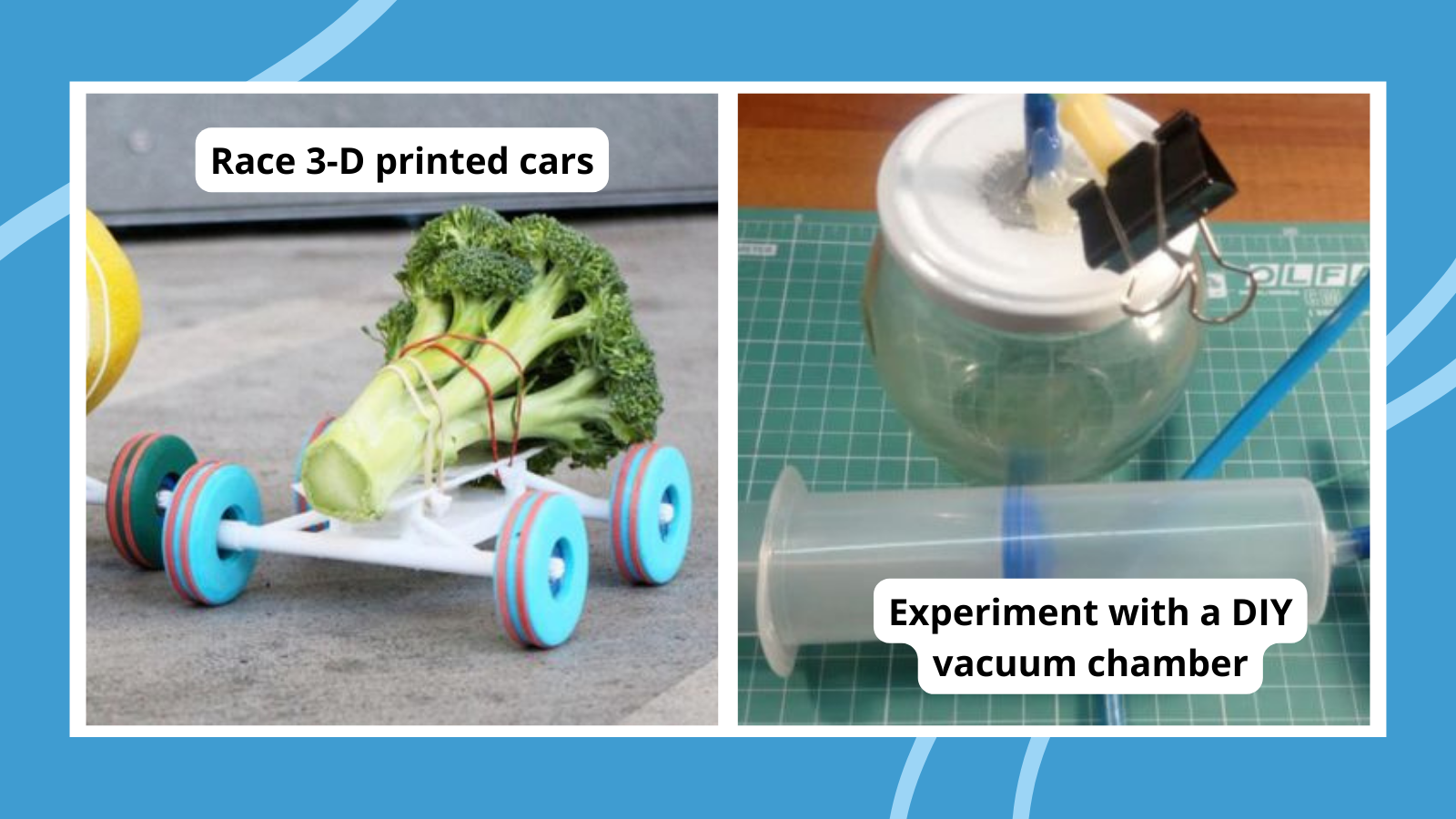
The cool thing about high school science fair projects is that kids are old enough to tackle some pretty amazing concepts. Some science experiments for high school are just advanced versions of simpler projects they did when they were younger, with detailed calculations or fewer instructions. Other projects involve fire, chemicals, or other materials they couldn’t use before.
Note: Some of these projects were written as classroom labs but can be adapted to become science fair projects too. Just consider variables that you can change up, like materials or other parameters. That changes a classroom activity into a true scientific method experiment!
To make it easier to find the right high school science fair project idea for you, we’ve rated all the projects by difficulty and the materials needed:
Difficulty:
- Easy: Low or no-prep experiments you can do pretty much anytime
- Medium: These take a little more setup or a longer time to complete
- Advanced: Experiments like these take a fairly big commitment of time or effort
- Basic: Simple items you probably already have around the house
- Medium: Items that you might not already have but are easy to get your hands on
- Advanced: These require specialized or more expensive supplies to complete
- Biology and Life Sciences High School Science Fair Projects
Chemistry High School Science Fair Projects
Physics high school science fair projects, engineering high school stem fair projects, biology and life science high school science fair projects.
Explore the living world with these biology science project ideas, learning more about plants, animals, the environment, and much more.
Extract DNA from an onion
Difficulty: Medium / Materials: Medium
You don’t need a lot of supplies to perform this experiment, but it’s impressive nonetheless. Turn this into a science fair project by trying it with other fruits and vegetables too.
Re-create Mendel’s pea plant experiment
Gregor Mendel’s pea plant experiments were some of the first to explore inherited traits and genetics. Try your own cross-pollination experiments with fast-growing plants like peas or beans.
Make plants move with light
By this age, kids know that many plants move toward sunlight, a process known as phototropism. So high school science fair projects on this topic need to introduce variables into the process, like covering seedling parts with different materials to see the effects.
Test the 5-second rule
We’d all like to know the answer to this one: Is it really safe to eat food you’ve dropped on the floor? Design and conduct an experiment to find out (although we think we might already know the answer).
Find out if color affects taste
Just how interlinked are all our senses? Does the sight of food affect how it tastes? Find out with a fun food science fair project like this one!
See the effects of antibiotics on bacteria
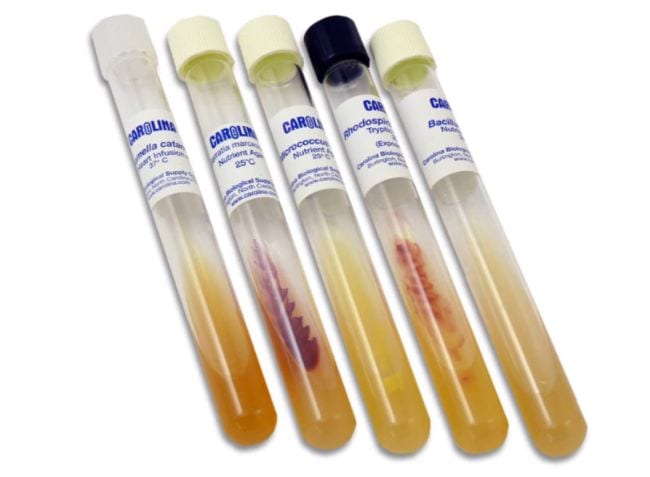
Difficulty: Medium / Materials: Advanced
Bacteria can be divided into two groups: gram-positive and gram-negative. In this experiment, students first determine the two groups, then try the effects of various antibiotics on them. You can get a gram stain kit , bacillus cereus and rhodospirillum rubrum cultures, and antibiotic discs from Home Science Tools.
Learn more: Antibiotics Project at Home Science Tools
Witness the carbon cycle in action

Experiment with the effects of light on the carbon cycle. Make this science fair project even more interesting by adding some small aquatic animals like snails or fish into the mix.
Learn more: Carbon Cycle at Science Lessons That Rock
Look for cell mitosis in an onion
Cell mitosis (division) is actually easy to see in action when you look at onion root tips under a microscope. Students will be amazed to see science theory become science reality right before their eyes. Adapt this lab into a high school science fair project by applying the process to other organisms too.
Test the effects of disinfectants

Grow bacteria in a petri dish along with paper disks soaked in various antiseptics and disinfectants. You’ll be able to see which ones effectively inhibit bacteria growth.
Learn more: Effectiveness of Antiseptics and Disinfectants at Amy Brown Science
Pit hydroponics against soil
Growing vegetables without soil (hydroponics) is a popular trend, allowing people to garden just about anywhere.
More Life Sciences and Biology Science Fair Projects for High School
Use these questions and ideas to design your own experiment:
- Explore ways to prevent soil erosion.
- What are the most accurate methods of predicting various weather patterns?
- Try out various fertilization methods to find the best and safest way to increase crop yield.
- What’s the best way to prevent mold growth on food for long-term storage?
- Does exposure to smoke or other air pollutants affect plant growth?
- Compare the chemical and/or bacterial content of various water sources (bottled, tap, spring, well water, etc.).
- Explore ways to clean up after an oil spill on land or water.
- Conduct a wildlife field survey in a given area and compare it to results from previous surveys.
- Find a new use for plastic bottles or bags to keep them out of landfills.
- Devise a way to desalinate seawater and make it safe to drink.
Bunsen burners, beakers and test tubes, and the possibility of (controlled) explosions? No wonder chemistry is such a popular topic for high school science fair projects!
Break apart covalent bonds
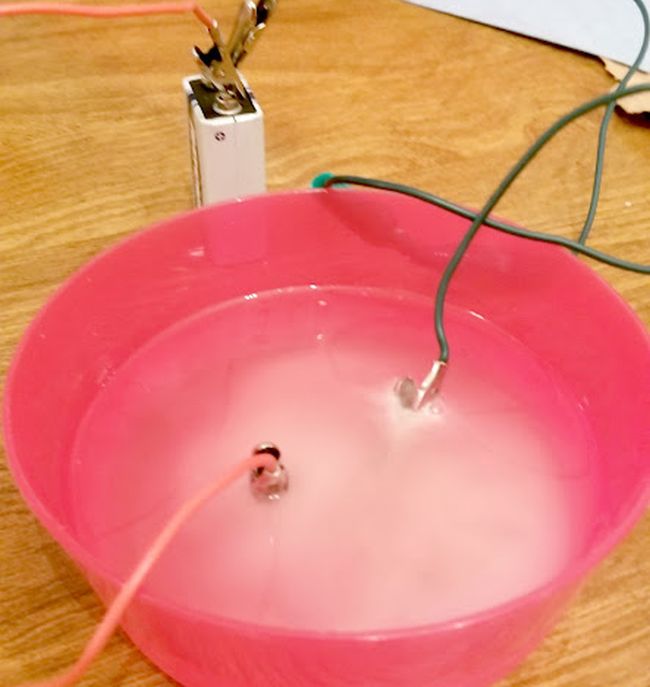
Break the covalent bond of H 2 O into H and O with this simple experiment. You only need simple supplies for this one. Turn it into a science fair project by changing up the variables—does the temperature of the water matter? What happens if you try this with other liquids?
Learn more: Covalent Bonds at Teaching Without Chairs
Measure the calories in various foods
Are the calorie counts on your favorite snacks accurate? Build your own calorimeter and find out! This kit from Home Science Tools has all the supplies you’ll need.
Detect latent fingerprints
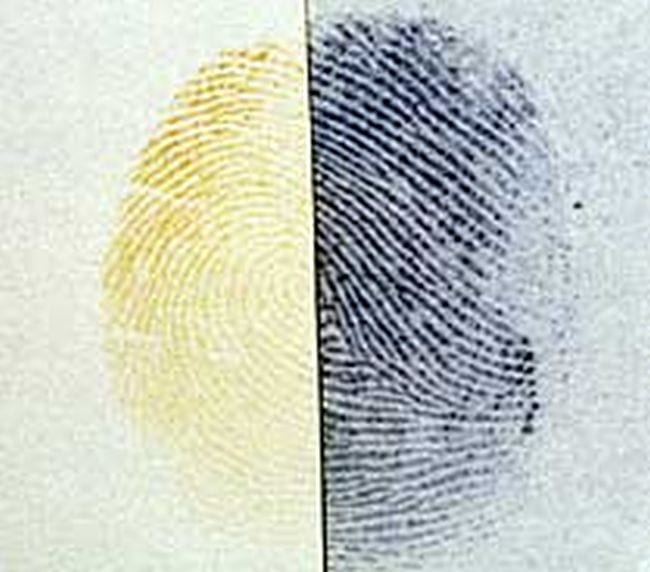
Forensic science is engrossing and can lead to important career opportunities too. Explore the chemistry needed to detect latent (invisible) fingerprints, just like they do for crime scenes!
Learn more: Fingerprints Project at Hub Pages
Use Alka-Seltzer to explore reaction rate
Difficulty: Easy / Materials: Easy
Tweak this basic concept to create a variety of high school chemistry science fair projects. Change the temperature, surface area, pressure, and more to see how reaction rates change.
Determine whether sports drinks provide more electrolytes than OJ
Are those pricey sports drinks really worth it? Try this experiment to find out. You’ll need some special equipment for this one; buy a complete kit at Home Science Tools .
Turn flames into a rainbow
You’ll need to get your hands on a few different chemicals for this experiment, but the wow factor will make it worth the effort! Make it a science project by seeing if different materials, air temperature, or other factors change the results.
Discover the size of a mole
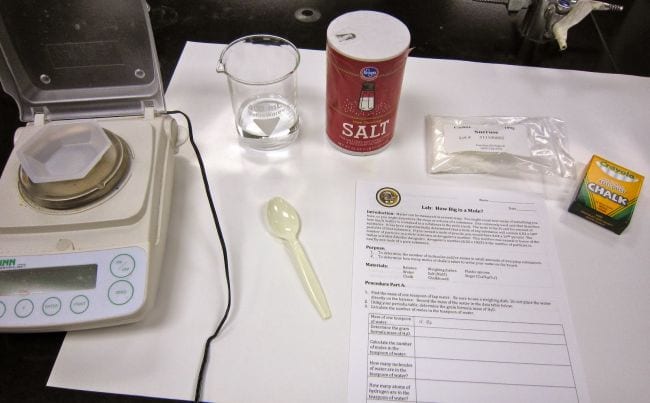
The mole is a key concept in chemistry, so it’s important to ensure students really understand it. This experiment uses simple materials like salt and chalk to make an abstract concept more concrete. Make it a project by applying the same procedure to a variety of substances, or determining whether outside variables have an effect on the results.
Learn more: How Big Is a Mole? at Amy Brown Science
Cook up candy to learn mole and molecule calculations
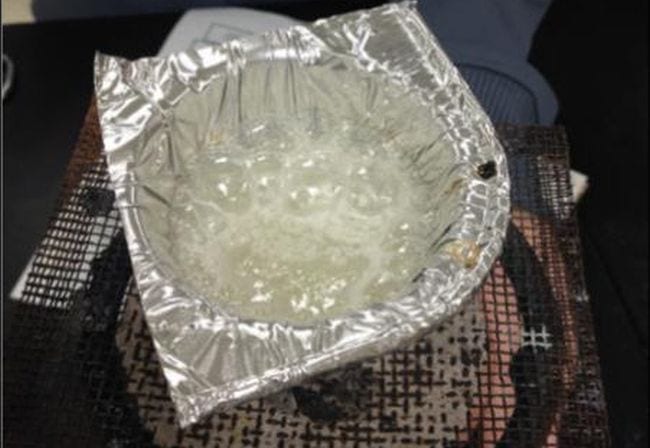
This edible experiment lets students make their own peppermint hard candy while they calculate mass, moles, molecules, and formula weights. Tweak the formulas to create different types of candy and make this into a sweet science fair project!
Learn more: Candy Chemistry at Dunigan Science on TpT
Make soap to understand saponification

Take a closer look at an everyday item: soap! Use oils and other ingredients to make your own soap, learning about esters and saponification. Tinker with the formula to find one that fits a particular set of parameters.
Learn more: Saponification at Chemistry Solutions on TpT
Uncover the secrets of evaporation
Explore the factors that affect evaporation, then come up with ways to slow them down or speed them up for a simple science fair project.
Learn more: Evaporation at Science Projects
More Chemistry Science Fair Projects for High School
These questions and ideas can spark ideas for a unique experiment:
- Compare the properties of sugar and artificial sweeteners.
- Explore the impact of temperature, concentration, and seeding on crystal growth.
- Test various antacids on the market to find the most effective product.
- What is the optimum temperature for yeast production when baking bread from scratch?
- Compare the vitamin C content of various fruits and vegetables.
- How does temperature affect enzyme-catalyzed reactions?
- Investigate the effects of pH on an acid-base chemical reaction.
- Devise a new natural way to test pH levels (such as cabbage leaves).
- What’s the best way to slow down metal oxidation (the form of rust)?
- How do changes in ingredients and method affect the results of a baking recipe?
When you think of physics science projects for high school, the first thing that comes to mind is probably the classic build-a-bridge. But there are plenty of other ways for teens to get hands-on with physics concepts. Here are some to try.
Remove the air in a DIY vacuum chamber
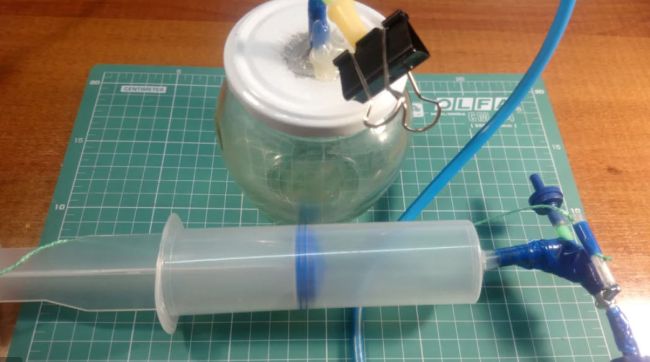
You can use a vacuum chamber to do lots of cool high school science fair projects, but a ready-made one can be expensive. Try this project to make your own with basic supplies.
Learn more: Vacuum Chamber at Instructables
Put together a mini Tesla coil
Looking for a simple but showy high school science fair project? Build your own mini Tesla coil and wow the crowd!
Boil water in a paper cup
Logic tells us we shouldn’t set a paper cup over a heat source, right? Yet it’s actually possible to boil water in a paper cup without burning the cup up! Learn about heat transfer and thermal conductivity with this experiment. Go deeper by trying other liquids like honey to see what happens.
Build a better light bulb
Emulate Edison and build your own simple light bulb. You can turn this into a science fair project by experimenting with different types of materials for filaments.
Measure the speed of light—with your microwave
Grab an egg and head to your microwave for this surprisingly simple experiment. By measuring the distance between cooked portions of egg whites, you’ll be able to calculate the wavelength of the microwaves in your oven and, in turn, the speed of light.
Generate a Lichtenberg figure
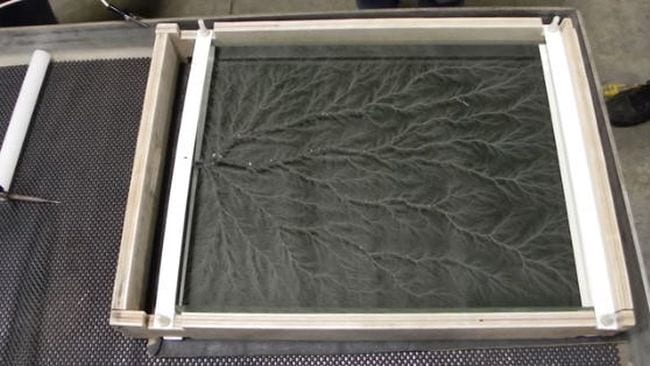
See electricity in action when you generate and capture a Lichtenberg figure with polyethylene sheets, wood, or even acrylic and toner. Change the electrical intensity and materials to see what types of patterns you can create.
Learn more: Lichtenberg Figure at Science Notes
Explore the power of friction with sticky note pads
Difficulty: Medium / Materials: Basic
Ever try to pull a piece of paper out of the middle of a big stack? It’s harder than you think it would be! That’s due to the power of friction. In this experiment, students interleave the sheets of two sticky note pads, then measure how much weight it takes to pull them apart. The results are astonishing!
Build a cloud chamber to prove background radiation
Ready to dip your toe into particle physics? Learn about background radiation and build a cloud chamber to prove the existence of muons.
Measure the effect of temperature on resistance
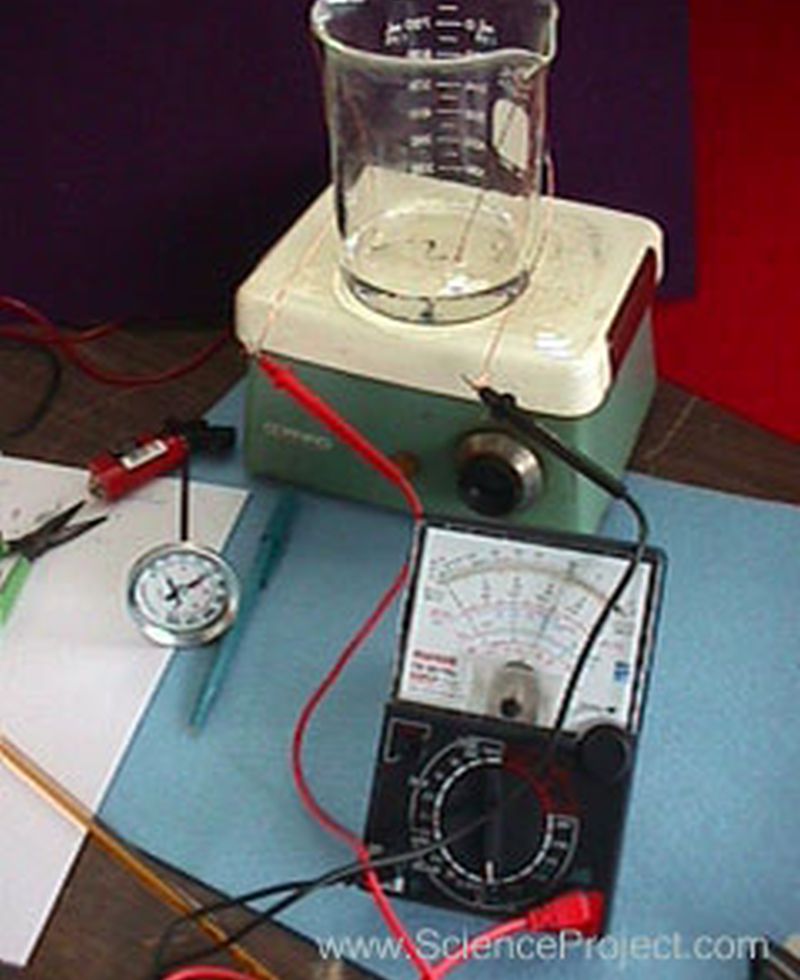
This is a popular and classic science fair experiment in physics. You’ll need a few specialized supplies, but they’re pretty easy to find.
Learn more: Temperature and Resistance at Science Project
Launch the best bottle rocket
A basic bottle rocket is pretty easy to build, but it opens the door to lots of different science fair projects. Design a powerful launcher, alter the rocket so it flies higher or farther, or use only recycled materials for your flyer.
More Physics Science Fair Projects for High School
Design your own experiment in response to these questions and prompts.
- Determine the most efficient solar panel design and placement.
- What’s the best way to eliminate friction between two objects?
- Explore the best methods of insulating an object against heat loss.
- What effect does temperature have on batteries when stored for long periods of time?
- Test the effects of magnets or electromagnetic fields on plants or other living organisms.
- Determine the best angle and speed of a bat swing in baseball.
- What’s the best way to soundproof an area or reduce noise produced by an item?
- Explore methods for reducing air resistance in automotive design.
- Use the concepts of torque and rotation to perfect a golf swing.
- Compare the strength and durability of various building materials.
Many schools are changing up their science fairs to STEM fairs, to encourage students with an interest in engineering to participate. Many great engineering science fair projects start with a STEM challenge, like those shown here. Use these ideas to spark a full-blown project to build something new and amazing!
Solve a current environmental issue
A science fair project can also be an entry into the Slingshot Challenge . Students produce a 1-minute video with a solution to a current environmental problem (think: uniting creative waste reducers on social media or rehabilitating forests affected by fire) for the chance to receive up to $10,000 in funding.
Construct a model maglev train
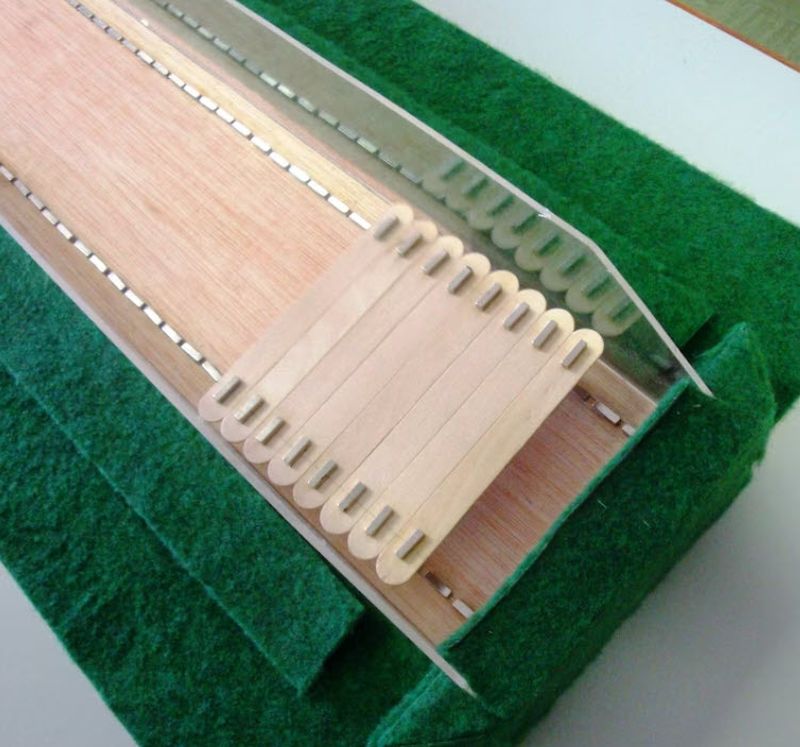
Maglev trains may just be the future of mass transportation. Build a model at home, and explore ways to implement the technology on a wider basis.
Learn more: Maglev Model Train at Supermagnete
Design a more efficient wind turbine
Wind energy is renewable, making it a good solution for the fossil fuel problem. For a smart science fair project, experiment to find the most efficient wind turbine design for a given situation.

Re-create Da Vinci’s flying machine

Da Vinci sketched several models of “flying machines” and hoped to soar through the sky. Do some research into his models and try to reconstruct one of your own.
Learn more: Da Vinci Flying Machine at Student Savvy
Design a heart-rate monitor
Smartwatches are ubiquitous these days, so pretty much anyone can wear a heart-rate monitor on their wrist. But do they work any better than one you can build yourself? Get the specialized items you need like the Arduino LilyPad Board on Amazon.
Race 3D printed cars
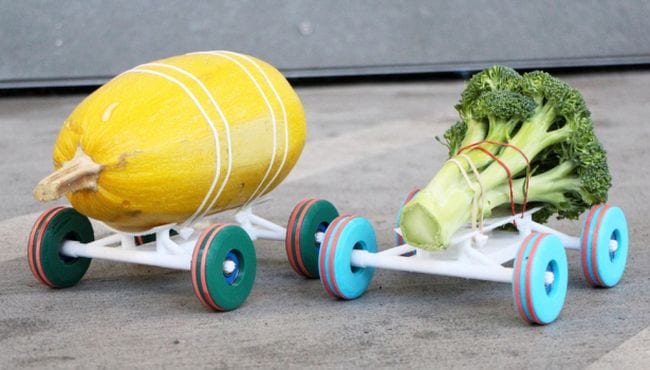
3D printers are a marvel of the modern era, and budding engineers should definitely learn to use them. Use Tinkercad or a similar program to design and print race cars that can support a defined weight, then see which can roll the fastest! (No 3D printer in your STEM lab? Check the local library. Many of them have 3D printers available for patrons to use.)
Learn more: 3D Printed Cars at Instructables
Grow veggies in a hydroponic garden
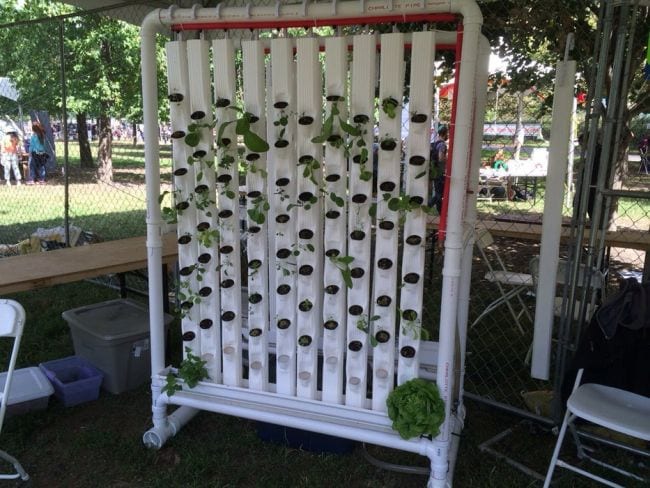
Hydroponics is the gardening wave of the future, making it easy to grow plants anywhere with minimal soil required. For a science fair STEM engineering challenge, design and construct your own hydroponic garden capable of growing vegetables to feed a family. This model is just one possible option.
Learn more: Hydroponics at Instructables
Grab items with a mechanical claw
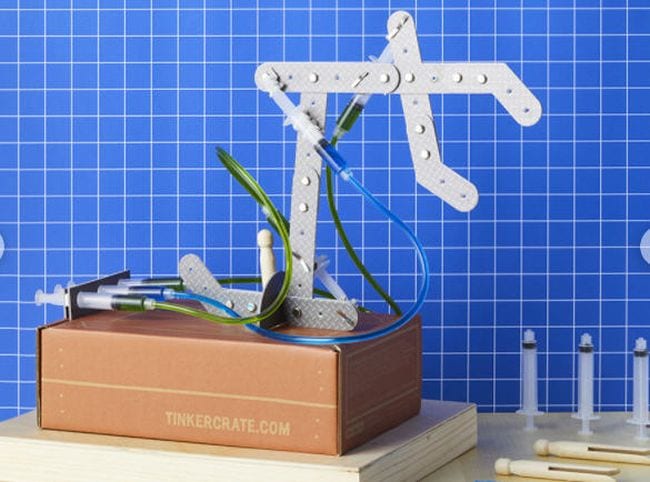
Delve into robotics with this engineering project. This kit includes all the materials you need, with complete video instructions. Once you’ve built the basic structure, tinker around with the design to improve its strength, accuracy, or other traits.
Learn more: Hydraulic Claw at KiwiCo
Construct a crystal radio
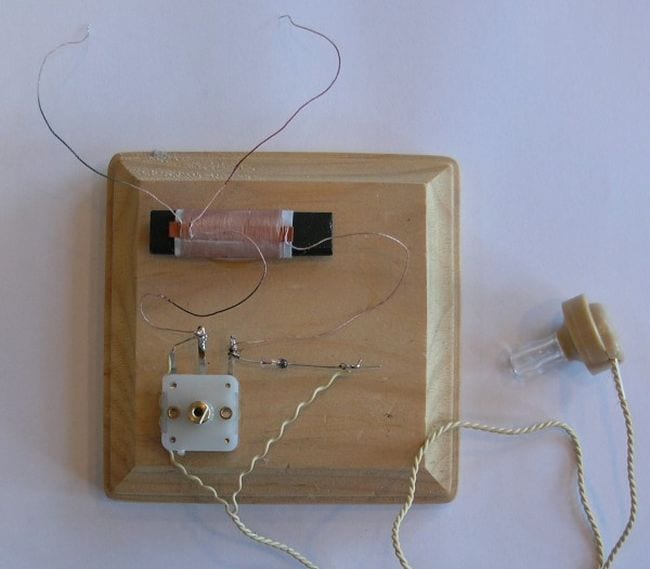
Return to the good old days and build a radio from scratch. This makes a cool science fair project if you experiment with different types of materials for the antenna. It takes some specialized equipment, but fortunately, Home Science Tools has an all-in-one kit for this project.
Learn more: Crystal Radio at Scitoys.com
Build a burglar alarm
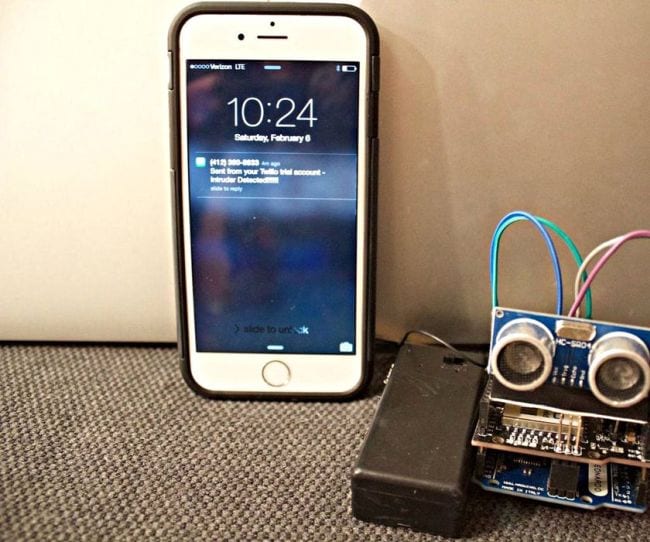
The challenge? Set up a system to alert you when someone has broken into your house or classroom. This can take any form students can dream up, and you can customize this STEM high school science experiment for multiple skill levels. Keep it simple with an alarm that makes a sound that can be heard from a specified distance. Or kick it up a notch and require the alarm system to send a notification to a cell phone, like the project at the link.
Learn more: Intruder Alarm at Instructables
Walk across a plastic bottle bridge
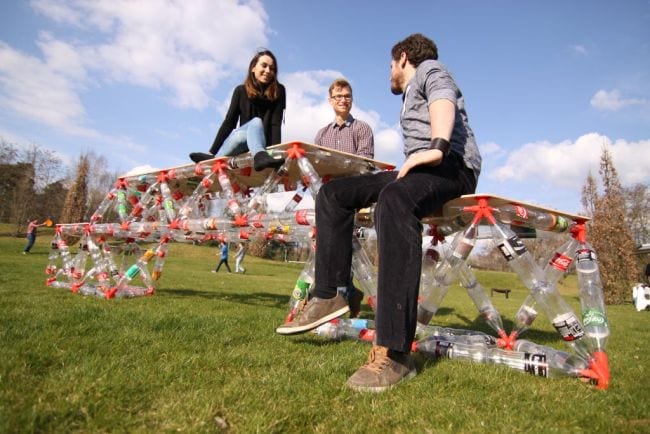
Balsa wood bridges are OK, but this plastic bottle bridge is really impressive! In fact, students can build all sorts of structures using the concept detailed at the link. It’s the ultimate upcycled STEM challenge!
Learn more: TrussFab Structures at Instructables
Looking for more science content? Check out the Best Science Websites for Middle and High School .
Plus, get all the latest teaching tips and tricks when you sign up for our newsletters .
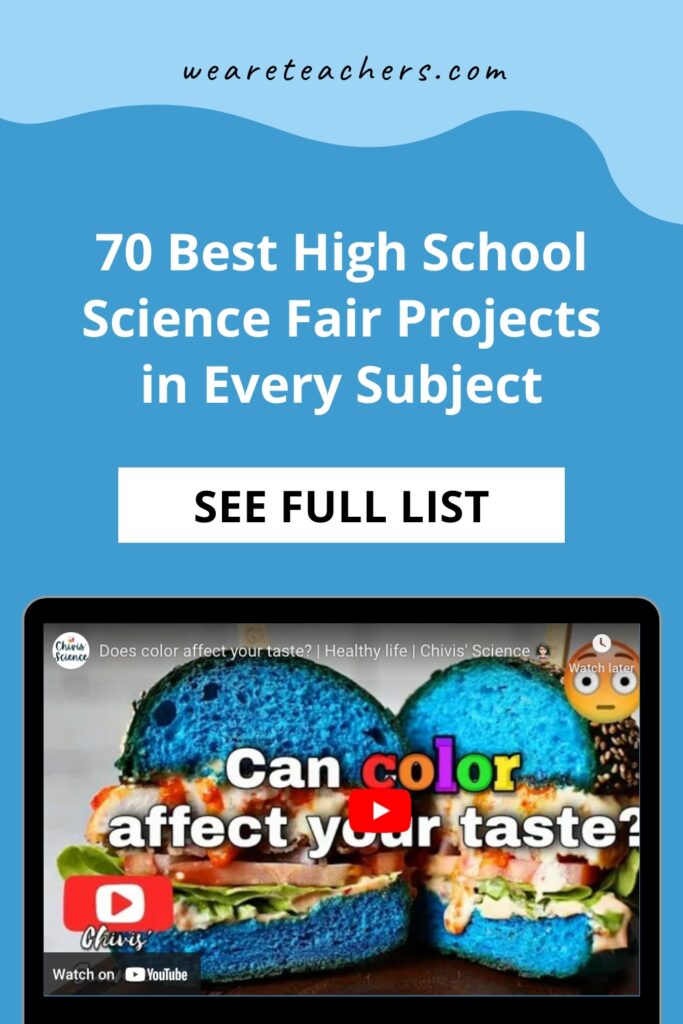
You Might Also Like
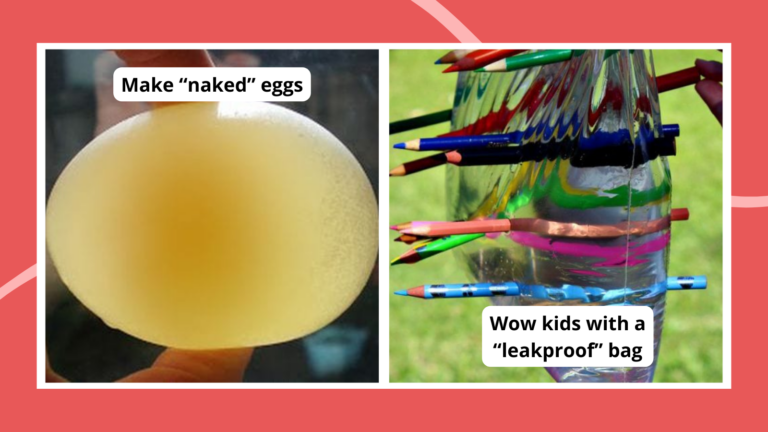
72 Easy Science Experiments Using Materials You Already Have On Hand
Because science doesn't have to be complicated. Continue Reading
Copyright © 2024. All rights reserved. 5335 Gate Parkway, Jacksonville, FL 32256

- Science Notes Posts
- Contact Science Notes
- Todd Helmenstine Biography
- Anne Helmenstine Biography
- Free Printable Periodic Tables (PDF and PNG)
- Periodic Table Wallpapers
- Interactive Periodic Table
- Periodic Table Posters
- How to Grow Crystals
- Chemistry Projects
- Fire and Flames Projects
- Holiday Science
- Chemistry Problems With Answers
- Physics Problems
- Unit Conversion Example Problems
- Chemistry Worksheets
- Biology Worksheets
- Periodic Table Worksheets
- Physical Science Worksheets
- Science Lab Worksheets
- My Amazon Books
Hypothesis Examples

A hypothesis is a prediction of the outcome of a test. It forms the basis for designing an experiment in the scientific method . A good hypothesis is testable, meaning it makes a prediction you can check with observation or experimentation. Here are different hypothesis examples.
Null Hypothesis Examples
The null hypothesis (H 0 ) is also known as the zero-difference or no-difference hypothesis. It predicts that changing one variable ( independent variable ) will have no effect on the variable being measured ( dependent variable ). Here are null hypothesis examples:
- Plant growth is unaffected by temperature.
- If you increase temperature, then solubility of salt will increase.
- Incidence of skin cancer is unrelated to ultraviolet light exposure.
- All brands of light bulb last equally long.
- Cats have no preference for the color of cat food.
- All daisies have the same number of petals.
Sometimes the null hypothesis shows there is a suspected correlation between two variables. For example, if you think plant growth is affected by temperature, you state the null hypothesis: “Plant growth is not affected by temperature.” Why do you do this, rather than say “If you change temperature, plant growth will be affected”? The answer is because it’s easier applying a statistical test that shows, with a high level of confidence, a null hypothesis is correct or incorrect.
Research Hypothesis Examples
A research hypothesis (H 1 ) is a type of hypothesis used to design an experiment. This type of hypothesis is often written as an if-then statement because it’s easy identifying the independent and dependent variables and seeing how one affects the other. If-then statements explore cause and effect. In other cases, the hypothesis shows a correlation between two variables. Here are some research hypothesis examples:
- If you leave the lights on, then it takes longer for people to fall asleep.
- If you refrigerate apples, they last longer before going bad.
- If you keep the curtains closed, then you need less electricity to heat or cool the house (the electric bill is lower).
- If you leave a bucket of water uncovered, then it evaporates more quickly.
- Goldfish lose their color if they are not exposed to light.
- Workers who take vacations are more productive than those who never take time off.
Is It Okay to Disprove a Hypothesis?
Yes! You may even choose to write your hypothesis in such a way that it can be disproved because it’s easier to prove a statement is wrong than to prove it is right. In other cases, if your prediction is incorrect, that doesn’t mean the science is bad. Revising a hypothesis is common. It demonstrates you learned something you did not know before you conducted the experiment.
Test yourself with a Scientific Method Quiz .
- Mellenbergh, G.J. (2008). Chapter 8: Research designs: Testing of research hypotheses. In H.J. Adèr & G.J. Mellenbergh (eds.), Advising on Research Methods: A Consultant’s Companion . Huizen, The Netherlands: Johannes van Kessel Publishing.
- Popper, Karl R. (1959). The Logic of Scientific Discovery . Hutchinson & Co. ISBN 3-1614-8410-X.
- Schick, Theodore; Vaughn, Lewis (2002). How to think about weird things: critical thinking for a New Age . Boston: McGraw-Hill Higher Education. ISBN 0-7674-2048-9.
- Tobi, Hilde; Kampen, Jarl K. (2018). “Research design: the methodology for interdisciplinary research framework”. Quality & Quantity . 52 (3): 1209–1225. doi: 10.1007/s11135-017-0513-8
Related Posts

- Publication
- Science Fair/Term Paper Ideas for Creation vs. Evolution

Students of all ages frequently ask for ideas on how to tie in principles from RTB’s testable creation model to their research projects. So I’ve compiled a list (with help from volunteer apologist Virginia Peterson, who researched links) to help get your creative juices flowing.
Anthropology (Human Origins)
- Examine the behaviors (fire-building, toolmaking) and key pieces of evidence (bones, tools, DNA) related to a major hominid species ( Neanderthals , Homo habilis, Homo erectus). How many specimens have been found? How solid is this evidence? How might this hominid be viewed from a testable creation model perspective?
- Explore one or more of the ways (via genetics , tool use, anatomy) Neanderthals differ from modern humans (descendants of Adam and Eve; Homo sapiens sapiens).
- Discuss example(s) of early human artistic expression (e.g., cave painting , jewelry-making, worship figurines ). How might such activity be viewed as an expression of humans being created in God’s image (Gen. 1:26–27)?
- Summarize some of the problems with the evolutionary “family tree” for human origins. Does the evidence show a gradual evolution from lesser species to modern humans or does it show a sudden appearance?
- Discuss the historical development of the big bang model. What prevailing model did scientists generally accept before the big bang ? Why were secular scientists resistant to the big bang model at first? Why are some scientists still skeptical?
- Investigate one major design feature of the solar system that allows complex life to exist on Earth.
- How does the moon creation event show finetuning and design? How did the moon collision change the earth and prepare it for life? What role does the moon play in sustaining life on Earth?
- How is our sun unique , and what is its role in sustaining life on Earth?
- What are the various types of galaxies? Why is it important that Earth reside in a spiral galaxy?
- What is the “cosmological constant”? Why might it be considered powerful evidence for supernatural design?
- Is “junk DNA” legitimate evidence for evolutionary descent from a common ancestor? Chemistry and the Origin-of-Life
- Does the famous Miller-Urey experiment provide an accurate reflection of early Earth’s conditions?
Earth Science
- Explain the importance of one natural disaster ( earthquakes , hurricanes) in sustaining life on Earth.
- Describe how one “biodeposit” formed and is used today. How might biodeposits imply forethought on the Creator’s part to help facilitate our high-tech human society?
Fossil Record
- Summarize one scientific challenge to biological evolution (e.g., temporal paradox, lack of transitional forms).
- Explore one “transitional form” that is cited as support for evolution (e.g., Archaeopteryx, fish-amphibian transitions , Neanderthals). How might this species be viewed from a creation model perspective? Does a creature with both fish-like features and land animal features mean it’s a transitional form and, therefore, evolution is true?
- Discuss one major extinction event (e.g., dinosaurs ). When did it happen? What other life-forms were affected? What caused the extinction? How quickly did the planet repopulate? What kinds of life replaced the extinct species?
- Highlight a famous Christian scientist (e.g., Kepler, Galileo, Copernicus, Newton, Francis Collins). How did his worldview influence his science?
- Explore the spiritual life of Charles Darwin. What role did his daughter’s death play in the development of his views about God, evil, and creation?
- Some ideas listed here are more challenging than others, but they can be simplified to fit your student’s education level. For additional resources, visit RTB’s website and click on “Topics.”
This article was originally published in the New Reasons To Believe e-zine.

It’s a Junkyard out There

Don’t Let Your Kids Major in Philosophy and Religion
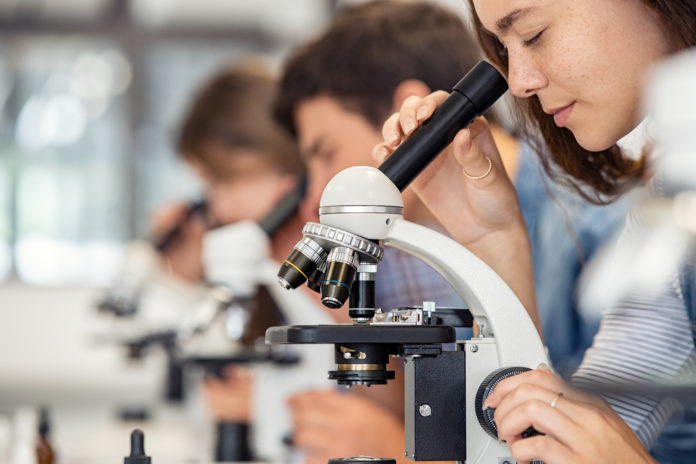
I’m a Scientist Because God Pursued Me
- How it works
- Recruit participants
12k+ Researchers
200+ Universities
85k+ Participants
Streamline your research
Create experiments and surveys in minutes. Recruit best-in-class participants for your studies. Transform your Psychology classroom into an interactive lab. All on Testable.
POWERING CUTTING EDGE RESEARCH AT

Testable is peer-reviewed

Sharon Gutnick
Research Scientist
"A true empirical platform that allows easy collaboration with zero onboarding! At this point, I introduce it to any student I work with. [...] Testable is unique because it was designed by psychophysicists, and it shows."

Alejandro J. Estudillo
Senior Lecturer
"Simple and versatile.Testable is definitely my first option for behavioral experiments. With Testable, complex behavioral and cognitive experiments can be programmed in a few minutes [...] and it is also an excellent teaching tool."

Jill Potratz
Doctoral Candidate
"I really love Testable! It has allowed me to easily set up an online experiment that includes a survey and an experiment with both audio and video files. It was super easy to learn and the support staff has been great."

Rob McIntosh
"I am impressed by the continuing development of the experiment engine, and by the quality of data from Testable Minds. "

Craig Marrer
"It took me less than two hours before I created my first workable study using Testable and couldn't be happier. "

Brent Pitchford
Graduate Student
"I've never had any issues collecting superior quality data compared to other recruiting platforms. Everything just works."
From idea to results in four simple steps
your project using a template from our growing library or use our natural language form to bootstrap any custom experiment. No more blank page anxiety!
details such as timings, randomisation and logic using our visual editor
participant data online. Our own participant pool is a click away and offers best-in-class data
your results data as individual csv files or as summary files that plug into any analysis tool
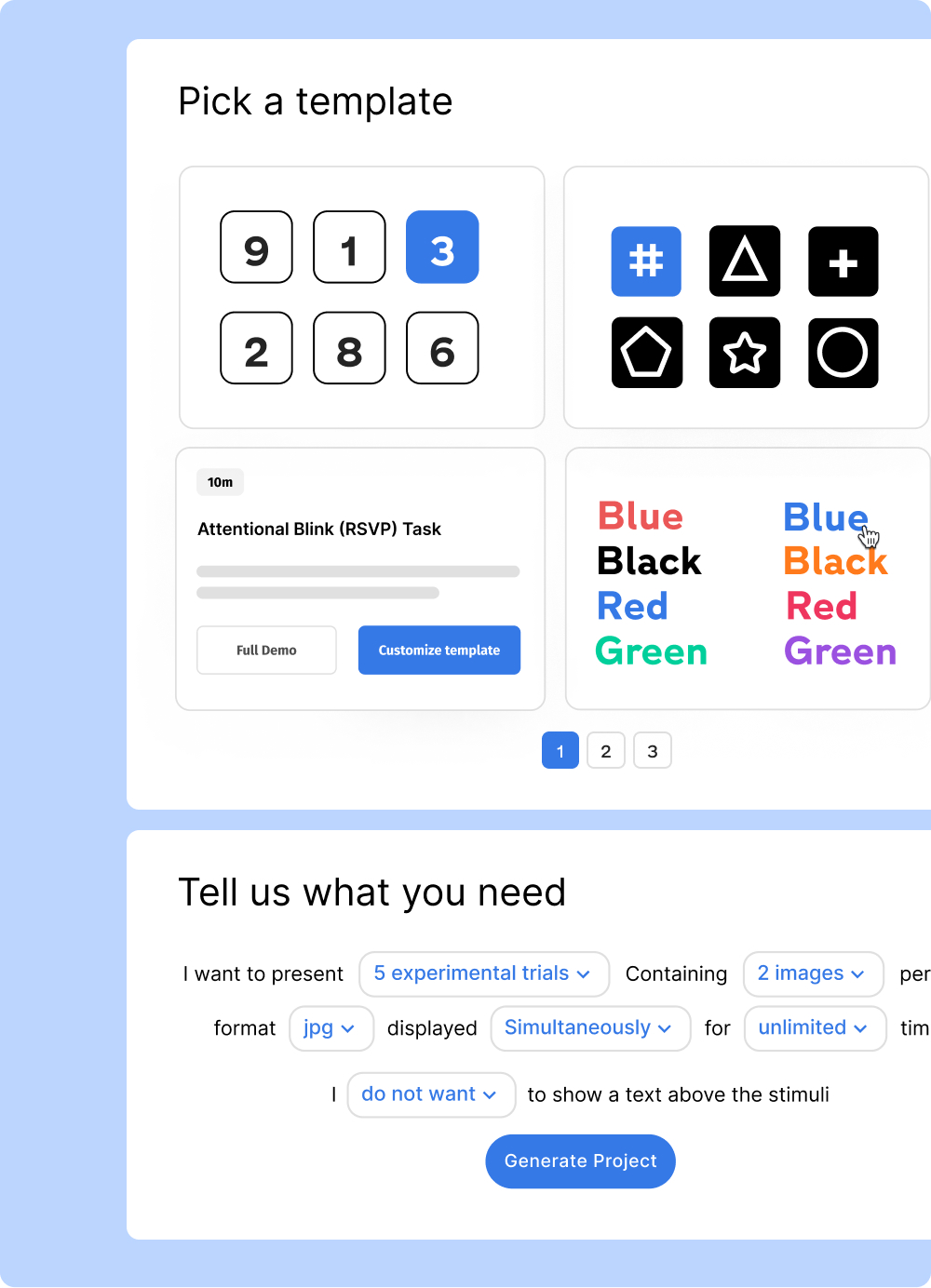
Testable is… testable
Start with a template from
We are the fastest and most intuitive way to create experiments, and here is the evidence. Give it a try and experience the thrill of having any experiment up and running in just a few minutes!
Stroop task

Say the color, not the word as quickly as you can
Go/No-Go task
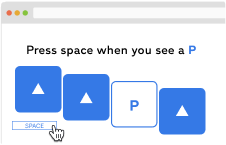
Press a button quickly when you see the “Go” signal
Wisconsin card sorting test

Sort cards according to changing rules
Old-new recognition task

Decide if you’ve seen a given word earlier in the test
Visual short term memory task

Memorise a visual scene as well as you can
DRM False memory task
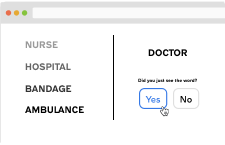
Decide if you’ve seen the word before - with a twist.
Attentional blink task

Detect a target in a rapid stream of distractors
Flanker task

Respond to a stimulus without getting distracted
Posner cueing task

Quickly respond to a target, and ignore flashing cues
Beck's depression inventory

Standard assessment of depression severity
Depression, Anxiety, Stress (DASS-21)
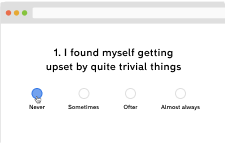
General assessment for affective disorders
Generalized Anxiety Disorder (GAD-7)
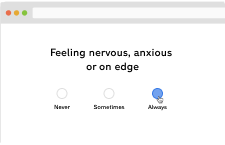
Standard assessment of generalized anxiety
Visual lexical decision task
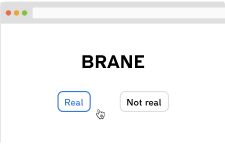
Decide if what is shown on screen is a real word or not
Word superiority effect

Memorise strings of letters
Implicit association task (IAT)

Sort words to binary categories with changing rules
The Barratt impulsiveness scale
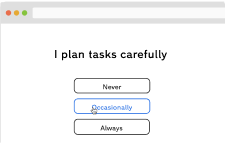
Standard assessment of impulsiveness
Need for Cognition assessment

Standard assessment for need for cognition
Big5 ten item personality inventory (TIPI)

Short personality assessment survey
Visual search task
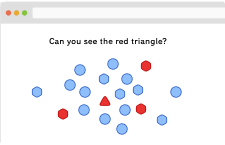
Spot a target in a scene of distractors
Face matching task (Facegen stimuli)

From a set of 3, choose the face that matches the target
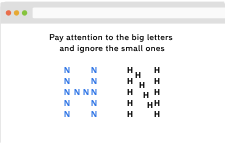
Respond to the small or large letters without getting distracted
Universal Template
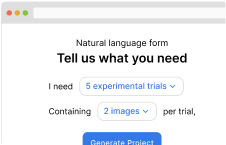
Describe your experiment using natural language.
Recruit reliable and diverse participants. No artificial ingredients.
Verified identity.
Our Verified Minds go through advanced identity verification by human and machine. Before each experiment their identity is reconfirmed, so we can guarantee basic demographic details such as age, gender and nationality.
Run any online study
Recruit participants for any browser-based survey or experiment. There are additional synergies with studies built in Testable that make collecting data for your research easier than ever.
Target demographics
Use our built-in filtering tool to only target your ideal participants for your studies. If the characteristic you are looking for is not covered, don’t worry: You can build your own short screener surveys to select for any trait.
Choose your data
You only need to pay for data that you approve. Most of our researchers do not to reject any participants, but if you find the occasional bad apple, you can reject their result and help us maintain the high quality of our pool.
Scheduled studies
Take control of your study timing with advanced scheduling. Choose when your experiment goes into field and during what times of day it should run. You can also account for the local time zone of your participants.
Attentive participants
Our participants join because they want to help advance the field of science through their participation. Through earning limits and fair rates we ensure that participants and researchers' motivations are aligned.
Become an expert in 10 minutes
Try a classic psychology experiment guide
Our step-by-step experiment guides help you kickstart your project with scientific background and a free, adaptable template.
Visual Lexical Decision task
The visual search task allows us to test how our attention is detects features in a visual scene.
Old-new Recognition test
The old/new recognition test is a measure of recognition accuracy. Participants need to assess whether a given item has been shown to them previously or not.
Posner Cueing task
The Posner cueing task measures how attention can move across our visual field even when our eyes remain fixated.
Packed with features
License admin panel, teaching module, customizable styling, participant pool, collaboration, template library, peer-to-peer experiment library, bot protection, offline data collection, user-defined variables, dynamic trial creation, precise rts, dedicated teaching module, admin panel for license management, performance feedback, real-time preview, gdpr-compliant, multiplayer economic games, consent forms, multimedia stimuli, precise timing controls, staircase designs, stimuli preloading, non-linear experiments, surveys & forms, background audio, powerful randomisation, timers and stopwatches, html styling, visual editor, dedicated support, supported by a strong academic board.

Bahador Bahrami
Director of Crowd Cognition Lab in Department of Psychology
Ludwig Maximilian University

Michael Banissy
Professor, Head of Psychological Science
University of Bristol

Alfonzo Caramazza
Professor of Psychology
Harvard University

Ophelia Deroy
Chair and Head of Philosophy of Mind Ludwig-Maximilians-University
Institute of Philosophy, London

Brad Duchaine
Professor of Psychological and Brain Sciences
Dartmouth College

Liuba Papeo
Chargée de Recherche
Institut Des Sciences Cognitives - Marc Jeannerod, France

Sam Schwarzkopf
Associate Professor
University of Auckland

Tirta Susilo
Victoria University of Wellington, New Zealand

Vincent Walsh
Professor of Human Brain Research
Institute of Cognitive Neuroscience, University College London
Get started in seconds
FREE Shipping on all our products! (Please expect 1 to 1.5 weeks for delivery due to transit delays. We ship every day including Saturday

- See Where To Start
- Read Our Story
- Learn About Our Philosophy
- Samples of Our Programs
- Intro To Science
- Summer's Lab
- Learning Through Science
- Grammar Stage from the Classical Science Series
- Sassafras Science
- Science Chunks Units
- Logic Stage from the Classical Science Series
- Physical Science
- Science Chunks
- High School Biology
- High School Chemistry
- Physics Rhetoric
- Holiday Science
- The Science Fair Project
- The Homeschooler's Guide to Experiments
- Classical Science Series
- Sassafras Science Series
- Biology Grammar Stage
- Biology Logic Stage
- Sassafras Zoology
- Sassafras Anatomy
- Sassafras Botany
- Biology Units
- Earth Science & Astronomy for the Grammar Stage
- Earth Science & Astronomy Logic Stage
- Sassafras Earth Science
- Sassafras Geology
- Sassafras Astronomy
- Earth Science & Astronomy Units
- Chemistry Grammar Stage
- Chemistry Logic Stage
- Sassafras Chemistry
- Chemistry Units
- Physics Grammar Stage
- Physics Logic Stage
- Physics Units
- Physics High School
- [email protected]
Your Cart is Empty
- $ 0.00 Subtotal
All books are shipped via media mail and can take up to three weeks to arrive. All experiment kits are shipped priority mail and may arrive before the books. All eBooks are delivered to your inbox within 5 minutes of your purchase.

- Middle School
- Multiple Ages
- High School
- Earth Science & Astronomy
- Multi Subject
Top 10 Biology Experiments You Don't Want to Miss
January 14, 2019 4 min read biology experiments science activities
A few years back we shared a series about how to teach the different areas of science at home, which you can find here:
- Teaching Biology at Home
- Teaching Earth Science at Home
- Teaching Astronomy at Home
- Teaching Chemistry at Home
- Teaching Physics at Home
The posts in the series have remained some of our most popular posts and so we thought we would help you all out by sharing our favorite experiments for each discipline!
We are going to start this series out with biology - here's how you can teach biology at home .
And without further ado, here are our top 10 biology experiments!
Top 10 Biology Experiments

1. Dissect a Flower
Many of the typical spring blooms, such as lilies, tulips, and daffodils, have clearly seen elements, which makes them excellent specimens for your students to study the structure of a flower.
One of the best ways to do this is through a flower dissection! These step-by-step directions for a flower dissection will help you examine the structure of a flower.
2. Raise a Butterfly
Butterflies go through an amazing life-cycle. A butterfly lays an egg, from which a caterpillar emerges. Then, the caterpillar eats and grows, eventually forming a chrysalis. And several weeks later a butterfly emerges!
There is nothing like watching this process in action! And these instructions on how to grow a butterfly will help you observe this life cycle in action.
3. Extract DNA
DNA is the stuff that tells our cells what to do and how to look. It resides in the nucleus of a cell, so as you can imagine it is quite tiny. In fact, you normally need a very powerful microscope to see DNA for yourself.
That is unless you extract it and force it to join up together into one giant mass of DNA. And that is exactly what you do with this Banana DNA Extraction experiment .
4. Make a Seed Board
Plants start their lives out as seeds and there is a huge variety of seeds, just like there is a huge variety of plants.
These four steps for making a seed board will help your students appreciate the differences and similarities between seeds.
5. Dissect an Owl Pellet
This one often grosses people out, but dissecting an owl pellet is a great way to learn about bones and animal diet.
Don't worry, owl pellets are not from the backside of an owl. Owls swallow their prey whole, so a few hours after the meal, they will regurgitate the indigestible parts in the form of a pellet.
These four steps for dissecting an owl pellet will help you get the most of this fascinating but slightly suspect dissection.
6. Look at Fingerprints
Our body is covered with an amazing organ know as skin. It's the largest organ of the integumentary system. The skin on our fingers, toes, palms of your hands, and soles of your feet is folded into tiny ridges. These ridges form swirling patterns, that help our hands and feet grip things.
These directions for examining your fingerprints will help your students understand just how amazing our skin is!
7. Grow an Herb Cutting
Roots are the structure of a plant that anchors into the ground and helps the provide the plant with the nutrients it needs to grow.
These directions for growing an herb cutting will help your students see how roots grow and get a chance to examine roots up close without getting dirty!
8. Make a Habitat Diorama
Our planet is covered with different types of habitats. Habitats are the place that is normal for the life and growth of a certain animal or a plant. In other words, it's the area where an animal or plant resides.
These directions for how to make a habitat diorama will help your students learn about the different plants and animals in an area in a hands-on way.
9. Eat a Cell Model
The cell is the basic unit of life, but it's so small that we can't see the cell's structure with our naked eyes. Enter the cell model.
You can make a jello cell, a cake cell, or a cell calzone to eat, but whatever cell you choose to snack on, these edible models will help your students visualize this basic building block of life.
10. Create a Fall Leaf (or Signs of Spring) Journal
When you study biology, it's a good idea to learn about the nature surrounding you. A Fall Leaf journal or a Signs of Spring journal will help your students learn about the trees and bushes that are in your area.
Wrapping it Up
There are loads more options for biology experiments out there that we love - in fact, we probably could have done a post with 100 experiments! But these are the ten we don't want you to miss. If you want more biology experiments, check out our Biology Pinterest board .
If you want it all pulled together for you, check out the following our homeschool science programs with easy-to-use plans for teaching biology:
- For Preschool – Intro to Science and Summer's Lab
- For Elementary Students – Biology for the Grammar Stage , Biology Lapbooks , The Sassafras Science Adventures ( Zoology , Anatomy , and Botany )
- For Middle School Students – Biology for the Logic Stage
- High School Students – Biology for High School
Also in Elemental Science Blog
10 posts on notebooking that you don’t want to miss.
April 22, 2024 3 min read
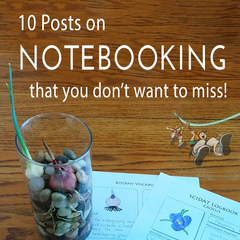
We love notebooking at Sassafras Science! And these ten posts on notebooking will help you understand the how's and why's of this super effective tool.
DEAR Day – Stop, Drop, And Read With The Sassafras Science
April 08, 2024 3 min read

Stop what you are doing, drop what is in your hands, grab a book, and start reading! And don't forget to come celebrate DEAR Day with Sassafras Science.
Writing and Science: Tips for Homeschool Science {Season 11 Recap}
April 01, 2024 3 min read
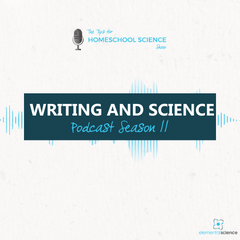
Sign up to get monthly science tips, plus the latest on new releases and more…

Do a Science Fair Project!
How do you do a science fair project.

Ask a parent, teacher, or other adult to help you research the topic and find out how to do a science fair project about it.
Test, answer, or show?
Your science fair project may do one of three things:
Test an idea (or hypothesis.)
Answer a question.
Show how nature works.
Topic ideas:
Space topics:.
How do the constellations change in the night sky over different periods of time?
How does the number of stars visible in the sky change from place to place because of light pollution?
Learn about and demonstrate the ancient method of parallax to measure the distance to an object, such as stars and planets.
Study different types of stars and explain different ways they end their life cycles.
Earth topics:
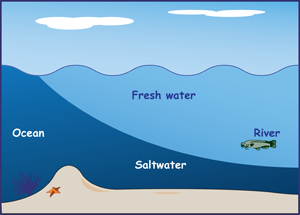
How do the phases of the Moon correspond to the changing tides?
Demonstrate what causes the phases of the Moon?
How does the tilt of Earth’s axis create seasons throughout the year?
How do weather conditions (temperature, humidity) affect how fast a puddle evaporates?
How salty is the ocean?
Solar system topics:

How does the size of a meteorite relate to the size of the crater it makes when it hits Earth?
How does the phase of the Moon affect the number of stars visible in the sky?
Show how a planet’s distance from the Sun affects its temperature.
Sun topics:
Observe and record changes in the number and placement of sun spots over several days. DO NOT look directly at the Sun!
Make a sundial and explain how it works.
Show why the Moon and the Sun appear to be the same size in the sky.
How effective are automobile sunshades?
Study and explain the life space of the sun relative to other stars.

Pick a topic.
Try to find out what people already know about it.
State a hypothesis related to the topic. That is, make a cause-and-effect-statement that you can test using the scientific method .
Explain something.
Make a plan to observe something.
Design and carry out your research, keeping careful records of everything you do or see.
Create an exhibit or display to show and explain to others what you hoped to test (if you had a hypothesis) or what question you wanted to answer, what you did, what your data showed, and your conclusions.
Write a short report that also states the same things as the exhibit or display, and also gives the sources of your initial background research.
Practice describing your project and results, so you will be ready for visitors to your exhibit at the science fair.
Follow these steps to a successful science fair entry!
If you liked this, you may like:
Vanderbilt University Native Meadow flourishing with collaborative research projects
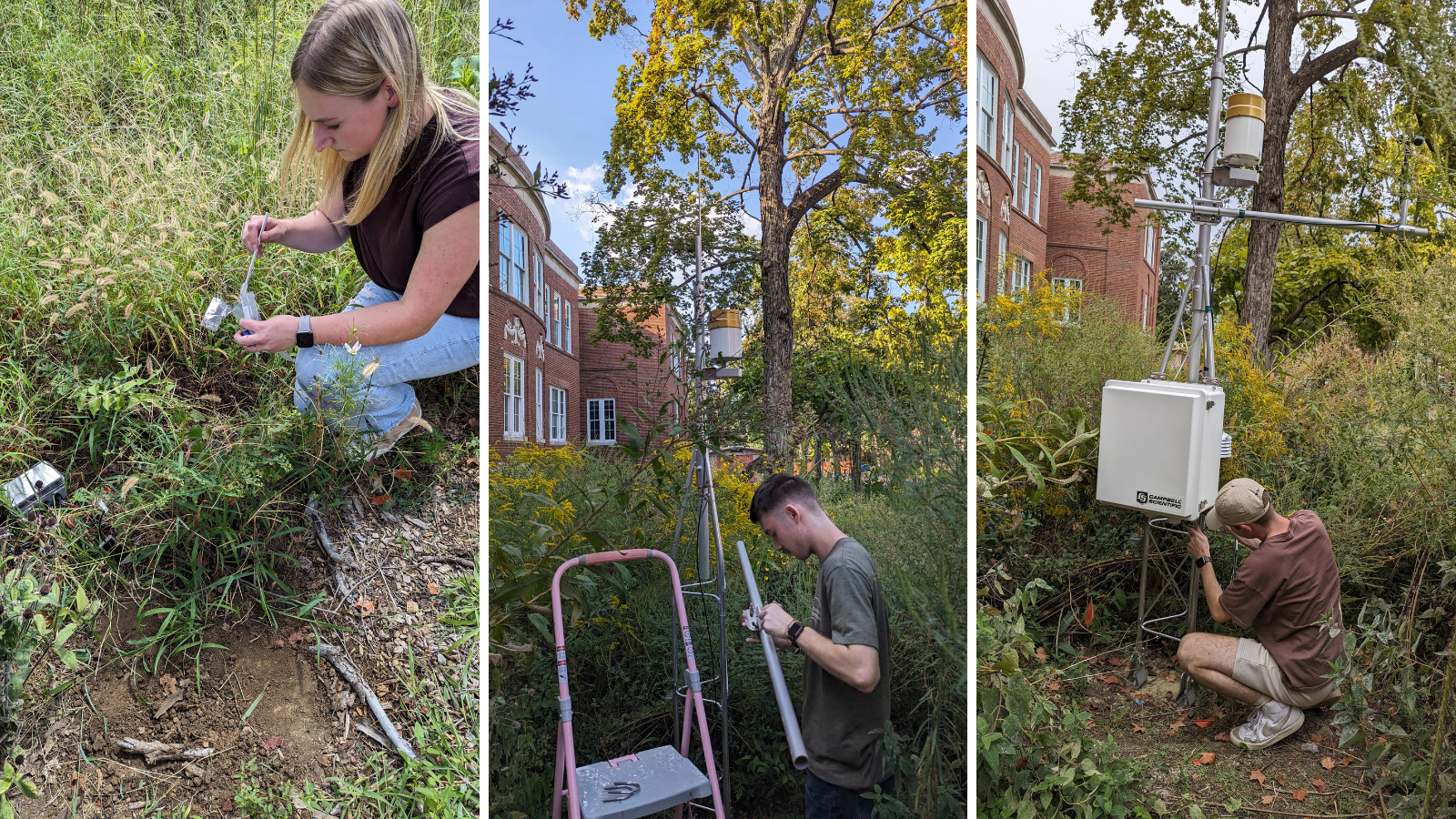
Media Inquiries
- 615-322-6397 Email
Latest Stories
- WATCH: Collaboration creates inspiration for Class of 2024 students
- Prestigious honor supports historian’s upcoming project
- VUSN matching program to inspire philanthropy, drive research and work to ease health inequities
Apr 29, 2024, 9:54 AM
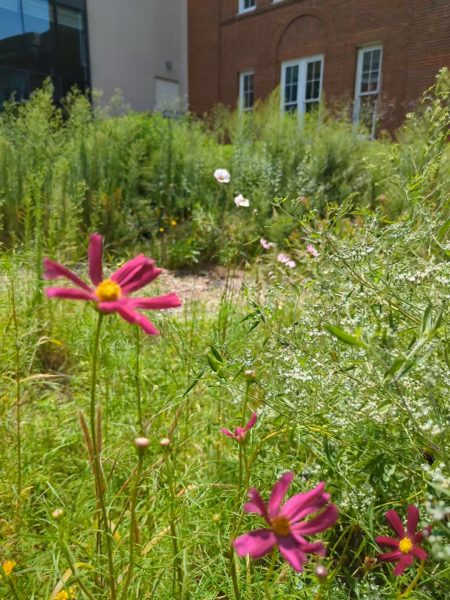
Funded by the Vanderbilt Green Fund in 2021, students proposed filling a meadow with plants native to the Tennessee/Nashville area to increase pollination and biodiversity and support soil health on campus. Many of the research projects within the meadow are supported by the university’s Curb Center for Art, Enterprise, and Public Policy.
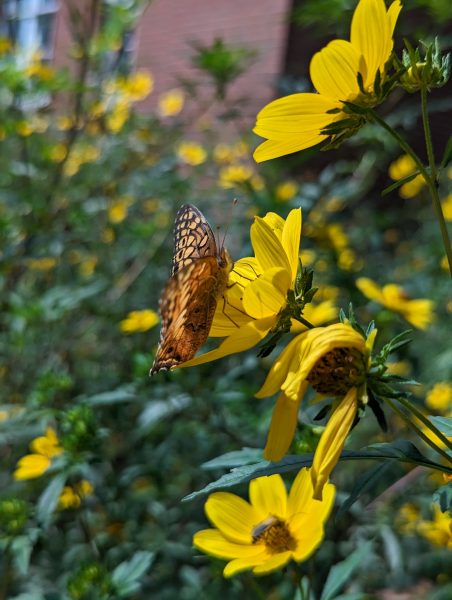
Follow @futurevusustainability and @vutrees on Instagram to learn more about this program.
Soil Health Research
Researchers, including faculty, undergraduates, middle and high school students, are monitoring the meadow to learn more about soil microbial activity, moisture levels and impact of the urban island effect on the area. A School of Science and Math at Vanderbilt class is taking core samples to learn more about soil health and its moisture under the direction of Chris Vanags , the d irector of the Peabody Research Office and a research assistant professor in the Department of Earth and Environmental Sciences.
Explore the data.>>
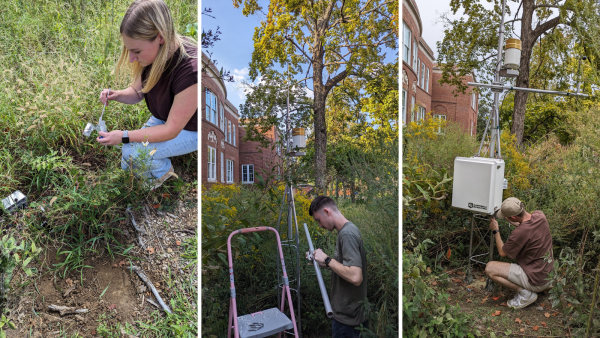
Allison Walker , assistant professor of biological sciences and chemistry, is collaborating with Vanderbilt students to conduct a genetic analysis of the soil. The research in the Native Meadow contributes to Walker’s research, which is focused on:
- Developing algorithms that predict natural product activity from the biosynthetic gene clusters that produce them
- Using machine learning to investigate regulation of natural product production
- Developing tools to guide the engineering of biosynthetic gene clusters to produce novel natural product-like molecules
- Developing machine learning tools to design natural product-like inhibitors of protein-protein interactions
Soil Your Undies
The “ Soil-Your-Undies Challenge ” is an ongoing research project that plants white, 100 percent cotton undies in the ground. After 60 days of being buried, researchers can collect soil health information based on the decomposition of the material. This project isn’t limited to the native meadow and other locations on VU’s campus—anyone can participate to learn more about the soil health in their home yard.
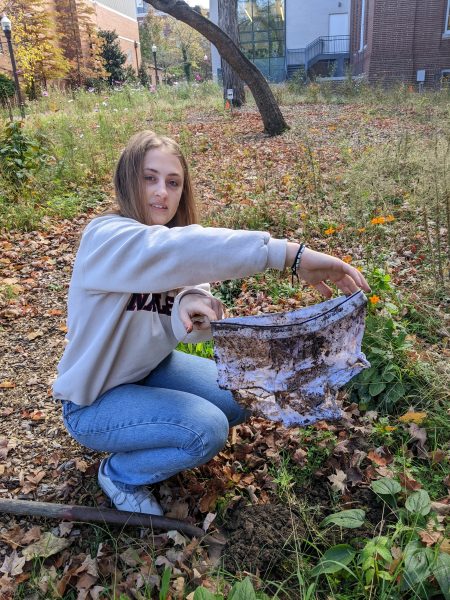
Spearheaded on campus by Vanags, and in collaboration with the ASCEND Initiative at Vanderbilt University and the Tennessee Environmental Council , the challenge was originated by Oregon farmers to develop more understanding about soil microbes, land management practices and carbon sequestration toward healthy and resilient soils.
“I love having students involved in the project,” Vanags said. “For me it’s a rare experience for a student, particularly in an urban setting, to be able to immerse themselves in what I consider a very tranquil environment that also has a lot of educational opportunities to it. I absolutely love that aspect of it.
“So part of this [project] is not just about science, but learning to observe. There is a great opportunity here to improve well-being. Being a scientist means you are observant, and observant means you are present, and that has a really positive impact on wellness. I hope that part of this [project] is a place for people to retreat, observe things and take a moment—go sit in one of those Adirondack chairs and think about things.”
Learn how to participate.>>
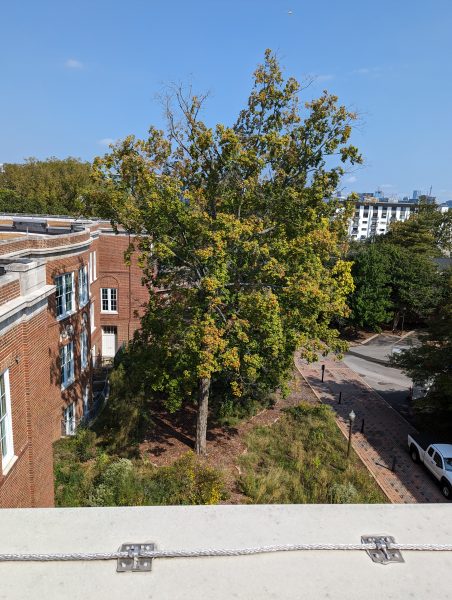
In 2023, a PhenoCam was installed overlooking the Native Meadow to study the relationship between the climate and the periodic events in biological life cycles of the trees and the plants. The cam and its data are overseen by Lin Meng , assistant professor of earth and environmental sciences, and her team.
The PhenoCam Network was established in 2008 by Northern Arizona University to use imagery from networked digital cameras to track phenology in a diverse range of ecosystems across North America and around the world. Today, there are over 700 sites, including the camera at the Vanderbilt Native Meadow.
Explore the data.>>
See today’s photo.>>
Art Inspiration
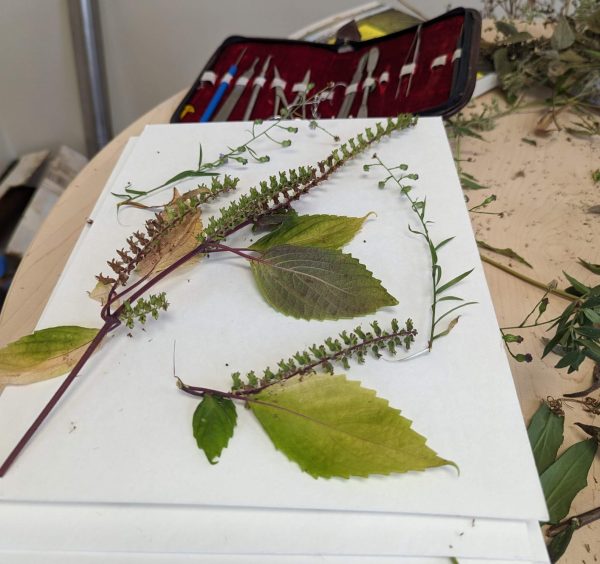
After an initial conversation with Vanags, Professor Angus Galloway from the Art Department began collaborating with him on how to take learning outside the classroom, creating a mobile learning environment where students could explore new places on campus to activate their imaginations.
“Where clearly there is a structure to layout and the plants and the planting, this space is just able to grow—and the plants within the space just get to go where they need to go, which is great,” Galloway said. “So I was like, ‘You know, my students should come here.’ And they should do a project taking what they have learned in class and fusing it with this meadow—but only after they have confronted it, learned more about it. And each student really took it their own direction.”

Making Music
Jonathan Rattner , associate professor and director of undergraduate students in the cinema and media arts, uses filmmaking to dive deeper into the idea of sensory experiences as a part of storytelling. After talking with Vanags and learning about the Native Meadow, Rattner began thinking about how to connect more with the natural world, including with plants and trees. He attached a synthesizer to plants in the garden, and he lets the plants do the talking and create music.
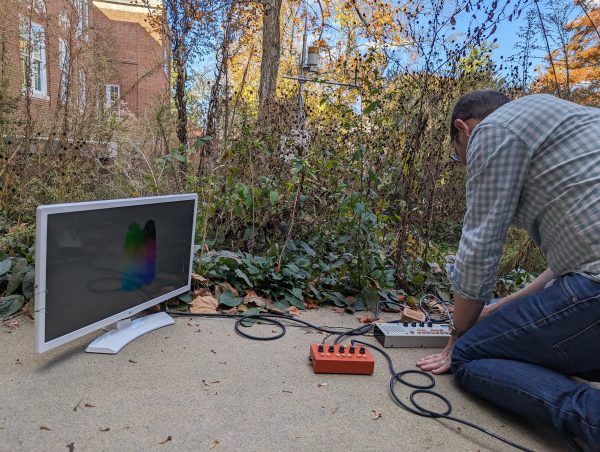
“Some people look at the plant stuff and think it is silly because it is not really speaking or making music, but to me it is a sensory thing. It is a way of listening in a new way, experiencing the plants in a new way. And, arguably, that actually changes the way we interact with it,” Rattner said. “The hope is, and the plan with the garden, is to connect some more focused technology so we know exactly what they are focusing on—like the heat, for example—so we can actually track data.”
Listen to the music.>>
The Native Meadow is open to the public. If you visit, share your photos and videos with @FutureVUSustainability on Instagram for a chance to be featured on the account.
Keep Reading

Refugee journeys illuminated: A look at Vanderbilt’s partnership with nonprofit NICE

Vanderbilt researchers explore new science education approach to build youths’ agency amid climate anxiety

HRSA awards $4 million to VUSN to address need for nurse-midwives and access to care
Explore story topics.
- myVU Latest Headlines
- myVU Students
- Allison Walker
- Angus Galloway
- Chris Vanags
- Cinema and Media Arts
- Department of Art
- Department of Biological Sciences
- Department of Cinema and Media Arts
- Division of Administration
- earth and environmental sciences
- Earth and Environmental studies
- Earth Month 2024
- FutureVu Sustainability
- Jonathan Rattner
- myvu monday
- Research News
- Vanderbilt Arboretum
- VU research news

Coding Careers and Accelerating Research
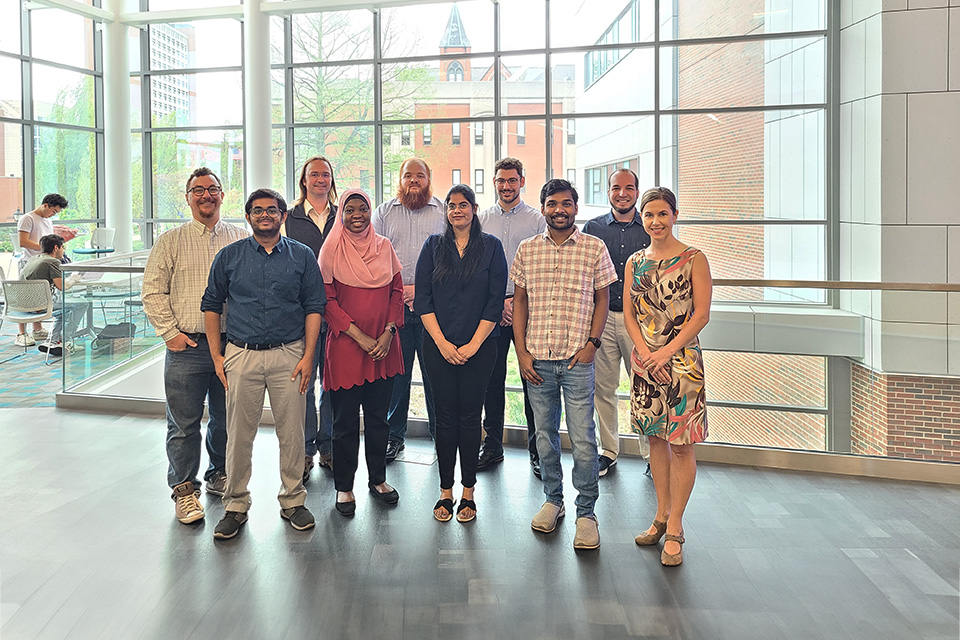
Discover how Open Source with SLU , a grant-funded initiative in Saint Louis University’s Department of Computer Science , is enhancing research efforts across the University and preparing students to enter today’s workforce with professional software development experience.
We can all recall a time when we brought an assignment home from school. Sometimes, it would take us hours, and other times, only minutes to complete before moving on to the next thing on our to-do list. This whole mentality — checking assignments off a to-do list like a routine — was something that bothered Kate Holdener, Ph.D. , and assistant professor of computer science, when she considered her courses at Saint Louis University.
“What bothered me about [course] projects is that they were kind of toy projects or throw-away work,” Holdener said. “Students did the work, but it was not going to be used by anyone seriously or be maintained afterward. This felt like a waste because we have so many talented students that could be building something more useful.”
Holdener is a professional software engineer specializing in software engineering, software development, and evolutionary algorithms. In early 2022, she received a two-year grant from the Alfred P. Sloan Foundation to create a center that would engage graduate and undergraduate students in open-source software development for SLU research projects. She founded the program called Open Source with SLU.
“I wanted to give students a more realistic environment for software development and also support the faculty that are doing research at SLU,” Holdener said.
“This grant opportunity was looking to support various initiatives that help train a better workforce in open source because it is one of the reasons we have such rapid technological advancement [today]," she said.
Software in the Open

For every piece of technology or automation, a piece of source code is needed to make it function. Once it is ready for release, the creator of the code must answer an essential question: Will the code be closed or open to the public?
The difference between closed and open-source code is in the name itself: It’s either open or closed to public visibility and modification. Open source allows anyone to adjust the code and collaborate to improve performance. It’s a critical learning opportunity for students interested in computer science.
Holdener explained that using open source has an added benefit on university campuses where students' availability and involvement may change from semester to semester.
“We don’t have to reinvent,” she said. “Instead of writing the code from scratch [each semester], we’ll use a library, put code together, and write our own code from there.”
Open Source with SLU gives participating students practical software development experience and helps researchers with their custom software needs. Holdener structured the program to allow SLU researchers to submit a formal request for a software project, and then graduate students lead a team of undergraduate students to execute the work. Graduate students are hired to take on the role of a senior developer, overseeing all stages of the project and checking in with undergraduate developers along the way.
The program has a collaborative atmosphere. Students must develop an actionable plan that includes designing, prototyping, testing and showcasing their work to their clients — much like a corporate software development team. Yet, the greatest takeaway for students is that their capstone project can now be used as professional experience in a job interview.
“Students make contributions to these projects, and all those contributions are visible to anybody,” Holdener said. “As a potential employer, I can go and look at your profile and see these are the things you have worked on and these are the lines of code you wrote. It gives [students] a concrete foundation and proof of what they worked on."
Purpose-Driven Projects
In its first year of operation, Open Source with SLU has contributed to research projects on campus and in the St. Louis community. While each project is research-driven, they are also purpose-driven, developing software that will benefit humanity in the long term. This supports the program’s three learning outcomes that guide student work on their projects — experience, service and promotion.
Daniel Shown, program director for Open Source with SLU, explained that students are able to achieve these goals and gain professional experience as they support research that is interesting or valuable to them. “First, we are trying to give students real-world software development experience,” he said. “Something more like what they will experience when they are out in the world and less like a class assignment. Second, we are building software that supports research, so we pick clients from across the University who are doing research. The third thing we are trying to do is promote and be a center of gravity for open-source software development and broader conversations about open scholarship on campus.”
At the time of this publication, the program is working on over 13 capstone projects that contribute to research in fields such as mathematics, statistics, chemistry, theology, history and community improvement. One community improvement project includes their recent work with an application that simplifies the process of volunteering at local homeless shelters. This project is in partnership with House Everyone STL.
“This project is a website, where volunteers can easily sign up for shifts at homeless shelters,” said Logan Wyas, SLU graduate student and developer on the project. “It has the ability to make a big impact on our world.”
The application will allow volunteers to sign up, view which shelters have open volunteer shifts, and give shelters the ability to see who is on their schedule. For students, it is the opportunity to address real-world problems in research or the local community that most excites them. When they see the skills they’ve learned in the classroom give them the power to improve the world around them, it makes the work all the more meaningful.

Another mission-driven project is called the Lived Religion Project, which wanted a digital platform that would share media and notes about people’s respective encounters with religion in their everyday life.
“Dr. Adam Parks does research in ethnography, which is how people live, and he is specifically focused on religion and the different ways people experience or engage in religion or religious artifacts,” Holdener said. “He needed a platform that would allow ethnographers to go out in the world, make notes on various religious artifacts, and come home to make more detailed notes after.”
This need developed into the idea for “Where’s Religion?” an application for both desktop and mobile that hosts a platform for collecting, organizing and sharing images, videos and sounds, along with textural notations sourced from a wide range of users. This collection of materials will not only give value to research stemming from history and religion, but also will provide a unique look at several viewpoints of American life.
Undergraduate student Massimo Evelti works on multiple projects within the program to further develop his skills, expand his knowledge of open source, and connect with classmates in a working environment. He said their roles as computer scientists and engineers within Open Source with SLU have an inherent capability to better the world now and into the future.
“Engineering is about creating things to help people, and many of these projects are for the betterment of society and its people,” Evelti said. “If one puts helping others as a priority, there will be plenty of moments to flourish in this field.”
Embracing a Collaborative Environment
Open Source with SLU requires a team effort, which is an expectation that not many of the students face in their other courses. Shown explained that the way scientists work across disciplines is more collaborative than ever, and putting the open-source work out into the community benefits all.
Holdener built the program to foster a collaborative approach when working on open-source projects. Graduate and undergraduate students come together with their unique interests, varying experience levels, and personal skills to gain the experience they need to move into their careers beyond SLU.
Graduate student Yash Bhatia received his undergraduate degree in computer engineering in 2019 from Mumbai University in India before coming to SLU to obtain his master’s in computer science. He works at Open Source with SLU as a graduate assistant and tech lead for open-source projects, including the “Where’s Religion?” desktop and mobile applications.
Bhatia believes the program helps students gain valuable experience working in a team environment that will prepare students for a career after graduation.
“There are many students who come to the United States with no experience working on real projects or real-time group efforts, where a group leader shapes the team and helps them to become better developers,” Bhatia said. “Open Source with SLU is an excellent initiative that builds skills and makes students learn about different technologies.”
Holdener explained that the program gives students an edge in their resumes. She said most entry-level computer science positions require one to two years of experience, which makes it more challenging for a student entering the job market. This program presents a solution for students — helping them gain relevant and provable experience before entering an interview.
“Whether it's these projects or some other projects, [students] can claim some experience through it,” she said. “Also, it's not just the claim — it's something [they] can demonstrate. I tell my students to list and link their projects on their resume because it’s their development. We run this program in a professional manner just like any software development organization.”
Toward the Discovery of the New
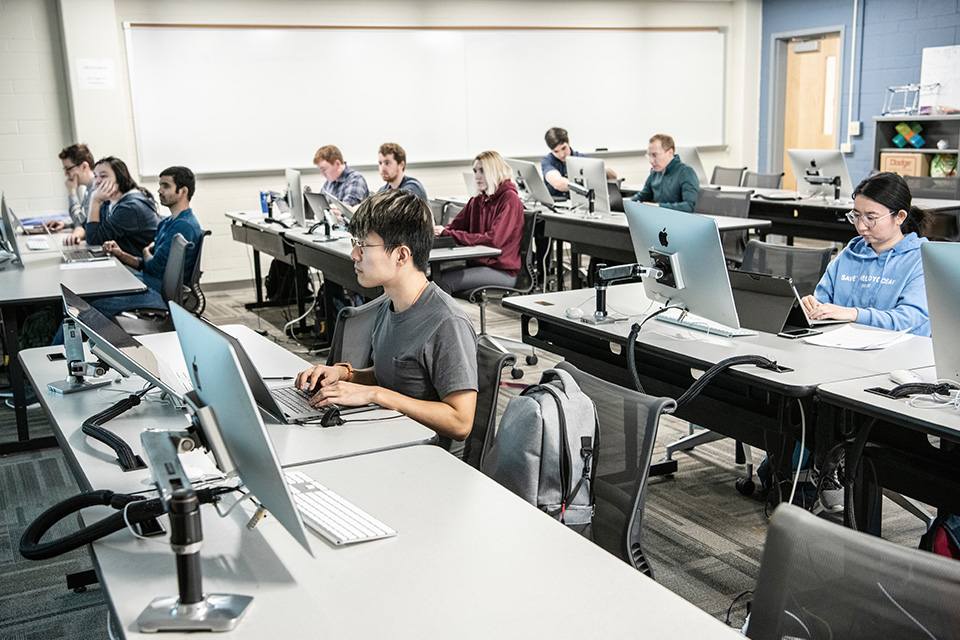
Open Source with SLU is making an immediate impact with computer science students across campus, inviting them to dive into their chosen craft with vigor, innovation and creativity. However, it's not just for students who work in coding and engineering software, but also for students who may have an interest in learning about open-source software.
“A long-term goal for me is to involve students at different levels in the program, and not necessarily from just the computer science department,” Holdener said. “There’s many aspects to these projects that are less technical, and it could be a playground where all students can come, jump in and participate in projects.”
Current students encourage others to reach out and become involved in what projects pique their interest.
“This program is an amazing initiative,” Evelti said. “I highly recommend students to look through the projects, and if there is one that catches your eye, dive in and start with the easiest problem. From there, you will start to understand what you are good at and what you need to work on. The important thing is don’t be timid to ask for help and to finish a problem you have started!”
As Open Source with SLU continues to grow, Holdener is optimistic that this initiative is just the start of an impactful, flourishing open-source community at SLU.
“Students hear about this, and they’ll reach out to say ‘Hey, how do I get involved in this? I want to build up my skills and participate,” she said. “We’re seeing more of this now, and it is exciting to me.”
To learn more about the current projects or to submit a project request to Open Source with SLU, visit their website at https://oss-slu.github.io/ .
Story by Mary Pogue, senior copywriter, Paradigm .
This piece was written for the 2023 SLU Research Institute Annual Impact Report. The Impact Report is printed each spring to celebrate the successes of our researchers from the previous year and share the story of SLU's rise as a preeminent Jesuit research university. Design, photography, and some writing contributions are made by Paradigm . More information can be found here .

Fifth Grade Science Projects (557 results)
Science Buddies' fifth grade science projects are the perfect way for fifth grade students to have fun exploring science, technology, engineering, and math (STEM). Our fifth grade projects are written and tested by scientists and are specifically created for use by students in the fifth grade. Students can choose to follow the science experiment as written or put their own spin on the project.
For a personalized list of science projects, fifth graders can use the Science Buddies Topic Selection Wizard . The wizard asks students to respond to a series of simple statements and then uses their answers to recommend age-appropriate projects that fit their interests.
Explore Our Science Videos


IMAGES
VIDEO
COMMENTS
Research Topics in Biology for Undergraduates. 41. Investigating the effects of pollutants on local plant species. Microbial diversity and ecosystem functioning in a specific habitat. Understanding the genetics of antibiotic resistance in bacteria. Impact of urbanization on bird populations and biodiversity. Investigating the role of pheromones ...
Testable Questions for Science Fair Projects Does the type of liquid affect how fast an ice cube melts? Does changing the temperature of water affect the buoyancy of an egg? Does the amount of Mentos (white candy) affect the height of the pop explosion? (remember you cannot use brand names on your board or journal)
In this project, we will perform and systematic review and meta-analysis of fasting or diet-induced autophagy and its benefits on the body. You will gain skills in 1) searching and reviewing primary literature, 2) computational skills for performing data analysis (R language), and 3) writing your scientific findings.
Here are 30 research ideas for high school students to stimulate inquiry and enhance their understanding of biological principles. 1. Genetics and Heredity: Understanding Life's Blueprint. Genetics and heredity are the foundation of life's diversity.
And we will also give you 100 biology topics for research projects that you can use for free - right now! Biology Research Paper Topics Really Are Important! It doesn't matter what area of biology you need to write about. This information applies to everything from zoology and botany to anatomy. The reality is that your professor will ...
23 Ideas for Science Experiments Using Plants. Plants are tremendously crucial to life on earth. They are the foundation of food chains in almost every ecosystem. Plants also play a significant role in the environment by influencing climate and producing life-giving oxygen. Plant project studies allow us to learn about plant biology and ...
The human body is an impressive piece of machinery, and your hands are no exception. With some training, they can perform delicate and complex tasks like manipulating pens and tools to create art. At the same time, hands have the strength and durability to hold a person's own body weight up on steep rocks.
With this project, you'll do background research and make measurements to understand how the sensitivity of your own hearing varies with the pitch of the sound. Read more. Delve into the intricacies of human biology and health with this collection of science experiments. Investigate anatomy, physiology, and diseases.
Only testable ideas are within the purview of science.For an idea to be testable, it must logically generate specific expectations — in other words, a set of observations that we could expect to make if the idea were true and a set of observations that would be inconsistent with the idea and lead you to believe that it is not true. For example, consider the idea that a sparrow's song is ...
A Definition: A hypothesis is a supposition or proposed explanation (often reframed as a defensible thesis statement) which concisely sums up the central argument of a research project. For this course, a central question is used to help derive a defensible hypothesis. Characteristics of a Hypothesis: It should never be structured as a question.
Okay, this is the hardest part of the whole project…picking your topic. But here are some ideas to get you started. Even if you don't like any, they may inspire you to come up with one of your own. Remember, check all project ideas with your teacher and parents, and don't do any project that would hurt or scare people or animals. Good luck!
Study cancer immunotherapy: the study of how cancer cells evade the immune system and how we can harness the immune system to battle cancer. 5. Track current progress and limitations of new methods and identify next opportunities. 6. Study how cancer cells can evolve to become resistant to certain treatments that were once effective.
Remove the air in a DIY vacuum chamber. Instructables. Difficulty: Medium / Materials: Medium. You can use a vacuum chamber to do lots of cool high school science fair projects, but a ready-made one can be expensive. Try this project to make your own with basic supplies. Learn more: Vacuum Chamber at Instructables.
Browse Science Projects. Over 1,200 free science projects for K-12. Browse by subject, grade level, or try our Topic Selection Wizard to find your winning science project. With science projects in 32 different areas of science from astronomy to zoology, we've got something for everyone! Let us help you find a science project that fits your ...
Here are some research hypothesis examples: If you leave the lights on, then it takes longer for people to fall asleep. If you refrigerate apples, they last longer before going bad. If you keep the curtains closed, then you need less electricity to heat or cool the house (the electric bill is lower). If you leave a bucket of water uncovered ...
Science Fair/Term Paper Ideas for Creation vs. Evolution. by Krista Bontrager. February 1, 2012. Students of all ages frequently ask for ideas on how to tie in principles from RTB's testable creation model to their research projects. So I've compiled a list (with help from volunteer apologist Virginia Peterson, who researched links) to help ...
Testable helps you build a wide range of behavioral experiments and surveys in the simplest and fastest way. ... Our step-by-step experiment guides help you kickstart your project with scientific background and a free, adaptable template. ... We are grateful for the funding received from the Arts & Humanities Research Council (Science in ...
The 'Ultimate' Science Fair Project: Frisbee Aerodynamics. Aerodynamics & Hydrodynamics. The Paper Plate Hovercraft. Aerodynamics & Hydrodynamics. The Swimming Secrets of Duck Feet. Aerodynamics & Hydrodynamics. The True Cost of a Bike Rack: Aerodynamics and Fuel Economy. Aerodynamics & Hydrodynamics.
Top 10 Biology Experiments. 1. Dissect a Flower. Many of the typical spring blooms, such as lilies, tulips, and daffodils, have clearly seen elements, which makes them excellent specimens for your students to study the structure of a flower. One of the best ways to do this is through a flower dissection!
Your science fair project may do one of three things: Test an idea (or hypothesis.) Answer a question. Show how nature works. Topic ideas: Space topics: ... and also gives the sources of your initial background research. Practice describing your project and results, so you will be ready for visitors to your exhibit at the science fair. ...
A scientific question usually starts with: How, What, When, Who, Which, Why, or Where. Here are some characteristics of a good science fair project question: The question should be interesting enough to read about, then work on for the next few weeks. There should be at least three sources of written information on the subject.
The " Soil-Your-Undies Challenge " is an ongoing research project that plants white, 100 percent cotton undies in the ground. After 60 days of being buried, researchers can collect soil health ...
Coding Careers and Accelerating Research. 04/29/2024. Discover how Open Source with SLU, a grant-funded initiative in Saint Louis University's Department of Computer Science, is enhancing research efforts across the University and preparing students to enter today's workforce with professional software development experience.
Our middle school projects are written and tested by scientists and are specifically created for use by students in the middle school grades. Students can choose to follow the science experiment as written or put their own spin on the project. For a personalized list of science projects, middle schoolers can use the Science Buddies Topic ...
Fifth Grade Science Projects. (557 results) Science Buddies' fifth grade science projects are the perfect way for fifth grade students to have fun exploring science, technology, engineering, and math (STEM). Our fifth grade projects are written and tested by scientists and are specifically created for use by students in the fifth grade.